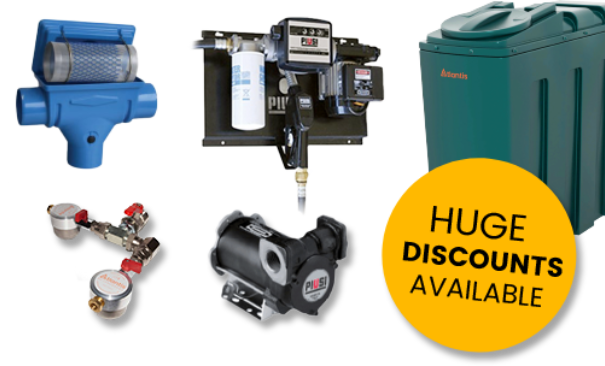IFJSUDogNjk2
TWluUHJpY2UgOTg0MCBDdXI6IDY5NiBNaW46IDYyNiBOb3c6IDY5Ng==
Q2FycmlhZ2VDaGFyZ2UgNTYgdG8gcHJvZHVjdCA5ODQwIHdhcyA2OTYgbm93IDc1Mg==
LS0tLSBGaW5hbCBQSUQ5ODQwIHByaWNlIDc1MiBbUlJQOiA2OTZdIHBuYW1lIFRhbmsgU3RhbmQgZm9yIEJVUy4xMDUwICg2MDBtbSBoaWdoKSBza3UgVEFOLkJVUy5TVEEtMTA1MA==
SVAgOTg0MCBhdXRo
IFJSUDogNjk2
TWluUHJpY2UgOTg0MCBDdXI6IDY5NiBNaW46IDYyNiBOb3c6IDY5Ng==
Q2FycmlhZ2VDaGFyZ2UgNTYgdG8gcHJvZHVjdCA5ODQwIHdhcyA2OTYgbm93IDc1Mg==
LS0tLSBGaW5hbCBQSUQ5ODQwIHByaWNlIDc1MiBbUlJQOiA2OTZdIHBuYW1lIFRhbmsgU3RhbmQgZm9yIEJVUy4xMDUwICg2MDBtbSBoaWdoKSBza3UgVEFOLkJVUy5TVEEtMTA1MA==
IFJSUDogNjk2
TWluUHJpY2UgOTg0MCBDdXI6IDY5NiBNaW46IDYyNiBOb3c6IDY5Ng==
Q2FycmlhZ2VDaGFyZ2UgNTYgdG8gcHJvZHVjdCA5ODQwIHdhcyA2OTYgbm93IDc1Mg==
LS0tLSBGaW5hbCBQSUQ5ODQwIHByaWNlIDc1MiBbUlJQOiA2OTZdIHBuYW1lIFRhbmsgU3RhbmQgZm9yIEJVUy4xMDUwICg2MDBtbSBoaWdoKSBza3UgVEFOLkJVUy5TVEEtMTA1MA==
IFJSUDogNjk2
TWluUHJpY2UgOTg0MCBDdXI6IDY5NiBNaW46IDYyNiBOb3c6IDY5Ng==
Q2FycmlhZ2VDaGFyZ2UgNTYgdG8gcHJvZHVjdCA5ODQwIHdhcyA2OTYgbm93IDc1Mg==
LS0tLSBGaW5hbCBQSUQ5ODQwIHByaWNlIDc1MiBbUlJQOiA2OTZdIHBuYW1lIFRhbmsgU3RhbmQgZm9yIEJVUy4xMDUwICg2MDBtbSBoaWdoKSBza3UgVEFOLkJVUy5TVEEtMTA1MA==
R1BIIDk4NDAgbG9naW4tdW5hdXRoZWQ=
MCBSUlA6IDY5Ng==
TWluUHJpY2UgOTg0MCBDdXI6IDY5NiBNaW46IDYyNiBOb3c6IDY5Ng==
Q2FycmlhZ2VDaGFyZ2UgNTYgdG8gcHJvZHVjdCA5ODQwIHdhcyA2OTYgbm93IDc1Mg==
LS0tLSBGaW5hbCBQSUQ5ODQwIHByaWNlIDc1MiBbUlJQOiA2OTZdIHBuYW1lIFRhbmsgU3RhbmQgZm9yIEJVUy4xMDUwICg2MDBtbSBoaWdoKSBza3UgVEFOLkJVUy5TVEEtMTA1MA==
SVAgOTg0MCBhdXRo
MCBSUlA6IDY5Ng==
TWluUHJpY2UgOTg0MCBDdXI6IDY5NiBNaW46IDYyNiBOb3c6IDY5Ng==
Q2FycmlhZ2VDaGFyZ2UgNTYgdG8gcHJvZHVjdCA5ODQwIHdhcyA2OTYgbm93IDc1Mg==
LS0tLSBGaW5hbCBQSUQ5ODQwIHByaWNlIDc1MiBbUlJQOiA2OTZdIHBuYW1lIFRhbmsgU3RhbmQgZm9yIEJVUy4xMDUwICg2MDBtbSBoaWdoKSBza3UgVEFOLkJVUy5TVEEtMTA1MA==
SVAgOTg0MCBhdXRo
MCBSUlA6IDY5Ng==
TWluUHJpY2UgOTg0MCBDdXI6IDY5NiBNaW46IDYyNiBOb3c6IDY5Ng==
Q2FycmlhZ2VDaGFyZ2UgNTYgdG8gcHJvZHVjdCA5ODQwIHdhcyA2OTYgbm93IDc1Mg==
LS0tLSBGaW5hbCBQSUQ5ODQwIHByaWNlIDc1MiBbUlJQOiA2OTZdIHBuYW1lIFRhbmsgU3RhbmQgZm9yIEJVUy4xMDUwICg2MDBtbSBoaWdoKSBza3UgVEFOLkJVUy5TVEEtMTA1MA==
SVAgOTg0MCBhdXRo
MCBSUlA6IDY5Ng==
TWluUHJpY2UgOTg0MCBDdXI6IDY5NiBNaW46IDYyNiBOb3c6IDY5Ng==
Q2FycmlhZ2VDaGFyZ2UgNTYgdG8gcHJvZHVjdCA5ODQwIHdhcyA2OTYgbm93IDc1Mg==
LS0tLSBGaW5hbCBQSUQ5ODQwIHByaWNlIDc1MiBbUlJQOiA2OTZdIHBuYW1lIFRhbmsgU3RhbmQgZm9yIEJVUy4xMDUwICg2MDBtbSBoaWdoKSBza3UgVEFOLkJVUy5TVEEtMTA1MA==
SVAgOTg0MCBhdXRo
MCBSUlA6IDY5Ng==
TWluUHJpY2UgOTg0MCBDdXI6IDY5NiBNaW46IDYyNiBOb3c6IDY5Ng==
Q2FycmlhZ2VDaGFyZ2UgNTYgdG8gcHJvZHVjdCA5ODQwIHdhcyA2OTYgbm93IDc1Mg==
LS0tLSBGaW5hbCBQSUQ5ODQwIHByaWNlIDc1MiBbUlJQOiA2OTZdIHBuYW1lIFRhbmsgU3RhbmQgZm9yIEJVUy4xMDUwICg2MDBtbSBoaWdoKSBza3UgVEFOLkJVUy5TVEEtMTA1MA==
SVAgOTg0MCBhdXRo
MCBSUlA6IDY5Ng==
TWluUHJpY2UgOTg0MCBDdXI6IDY5NiBNaW46IDYyNiBOb3c6IDY5Ng==
Q2FycmlhZ2VDaGFyZ2UgNTYgdG8gcHJvZHVjdCA5ODQwIHdhcyA2OTYgbm93IDc1Mg==
LS0tLSBGaW5hbCBQSUQ5ODQwIHByaWNlIDc1MiBbUlJQOiA2OTZdIHBuYW1lIFRhbmsgU3RhbmQgZm9yIEJVUy4xMDUwICg2MDBtbSBoaWdoKSBza3UgVEFOLkJVUy5TVEEtMTA1MA==
IFJSUDogMzEwNQ==
Q2FycmlhZ2VDaGFyZ2UgODYgdG8gcHJvZHVjdCA4OTEyIHdhcyAzMTA1IG5vdyAzMTkx
LS0tLSBGaW5hbCBQSUQ4OTEyIHByaWNlIDMxOTEgW1JSUDogMzEwNV0gcG5hbWUgOTUwIExpdHJlIFN0ZWVsIEJ1bmRlZCBEaWVzZWwgUG9ydGFUYW5rIHNrdSBUQU4uRElTLlAtMTAwMA==
SVAgODkxMiBhdXRo
IFJSUDogMzEwNQ==
Q2FycmlhZ2VDaGFyZ2UgODYgdG8gcHJvZHVjdCA4OTEyIHdhcyAzMTA1IG5vdyAzMTkx
LS0tLSBGaW5hbCBQSUQ4OTEyIHByaWNlIDMxOTEgW1JSUDogMzEwNV0gcG5hbWUgOTUwIExpdHJlIFN0ZWVsIEJ1bmRlZCBEaWVzZWwgUG9ydGFUYW5rIHNrdSBUQU4uRElTLlAtMTAwMA==
IFJSUDogMzEwNQ==
Q2FycmlhZ2VDaGFyZ2UgODYgdG8gcHJvZHVjdCA4OTEyIHdhcyAzMTA1IG5vdyAzMTkx
LS0tLSBGaW5hbCBQSUQ4OTEyIHByaWNlIDMxOTEgW1JSUDogMzEwNV0gcG5hbWUgOTUwIExpdHJlIFN0ZWVsIEJ1bmRlZCBEaWVzZWwgUG9ydGFUYW5rIHNrdSBUQU4uRElTLlAtMTAwMA==
IFJSUDogMzEwNQ==
Q2FycmlhZ2VDaGFyZ2UgODYgdG8gcHJvZHVjdCA4OTEyIHdhcyAzMTA1IG5vdyAzMTkx
LS0tLSBGaW5hbCBQSUQ4OTEyIHByaWNlIDMxOTEgW1JSUDogMzEwNV0gcG5hbWUgOTUwIExpdHJlIFN0ZWVsIEJ1bmRlZCBEaWVzZWwgUG9ydGFUYW5rIHNrdSBUQU4uRElTLlAtMTAwMA==
R1BIIDg5MTIgbG9naW4tdW5hdXRoZWQ=
MCBSUlA6IDMxMDU=
Q2FycmlhZ2VDaGFyZ2UgODYgdG8gcHJvZHVjdCA4OTEyIHdhcyAzMTA1IG5vdyAzMTkx
LS0tLSBGaW5hbCBQSUQ4OTEyIHByaWNlIDMxOTEgW1JSUDogMzEwNV0gcG5hbWUgOTUwIExpdHJlIFN0ZWVsIEJ1bmRlZCBEaWVzZWwgUG9ydGFUYW5rIHNrdSBUQU4uRElTLlAtMTAwMA==
SVAgODkxMiBhdXRo
MCBSUlA6IDMxMDU=
Q2FycmlhZ2VDaGFyZ2UgODYgdG8gcHJvZHVjdCA4OTEyIHdhcyAzMTA1IG5vdyAzMTkx
LS0tLSBGaW5hbCBQSUQ4OTEyIHByaWNlIDMxOTEgW1JSUDogMzEwNV0gcG5hbWUgOTUwIExpdHJlIFN0ZWVsIEJ1bmRlZCBEaWVzZWwgUG9ydGFUYW5rIHNrdSBUQU4uRElTLlAtMTAwMA==
SVAgODkxMiBhdXRo
MCBSUlA6IDMxMDU=
Q2FycmlhZ2VDaGFyZ2UgODYgdG8gcHJvZHVjdCA4OTEyIHdhcyAzMTA1IG5vdyAzMTkx
LS0tLSBGaW5hbCBQSUQ4OTEyIHByaWNlIDMxOTEgW1JSUDogMzEwNV0gcG5hbWUgOTUwIExpdHJlIFN0ZWVsIEJ1bmRlZCBEaWVzZWwgUG9ydGFUYW5rIHNrdSBUQU4uRElTLlAtMTAwMA==
SVAgODkxMiBhdXRo
MCBSUlA6IDMxMDU=
Q2FycmlhZ2VDaGFyZ2UgODYgdG8gcHJvZHVjdCA4OTEyIHdhcyAzMTA1IG5vdyAzMTkx
LS0tLSBGaW5hbCBQSUQ4OTEyIHByaWNlIDMxOTEgW1JSUDogMzEwNV0gcG5hbWUgOTUwIExpdHJlIFN0ZWVsIEJ1bmRlZCBEaWVzZWwgUG9ydGFUYW5rIHNrdSBUQU4uRElTLlAtMTAwMA==
SVAgODkxMiBhdXRo
MCBSUlA6IDMxMDU=
Q2FycmlhZ2VDaGFyZ2UgODYgdG8gcHJvZHVjdCA4OTEyIHdhcyAzMTA1IG5vdyAzMTkx
LS0tLSBGaW5hbCBQSUQ4OTEyIHByaWNlIDMxOTEgW1JSUDogMzEwNV0gcG5hbWUgOTUwIExpdHJlIFN0ZWVsIEJ1bmRlZCBEaWVzZWwgUG9ydGFUYW5rIHNrdSBUQU4uRElTLlAtMTAwMA==
SVAgODkxMiBhdXRo
MCBSUlA6IDMxMDU=
Q2FycmlhZ2VDaGFyZ2UgODYgdG8gcHJvZHVjdCA4OTEyIHdhcyAzMTA1IG5vdyAzMTkx
LS0tLSBGaW5hbCBQSUQ4OTEyIHByaWNlIDMxOTEgW1JSUDogMzEwNV0gcG5hbWUgOTUwIExpdHJlIFN0ZWVsIEJ1bmRlZCBEaWVzZWwgUG9ydGFUYW5rIHNrdSBUQU4uRElTLlAtMTAwMA==
IFJSUDogNTA=
Q2FycmlhZ2VDaGFyZ2Ugbm90IHNlbGVjdGVkIGZvciBwcm9kdWN0IDM2NjU=
LS0tLSBGaW5hbCBQSUQzNjY1IHByaWNlIDUwIFtSUlA6IDUwXSBwbmFtZSBDaW0tVGVrIENUNzAwNjIgV2F0ZXIgJmFtcDsgUGFydGljbGUgRnVlbCBGaWx0ZXIgRWxlbWVudCA3MExQTSAtIDEwIE1pY3JvbiBza3UgQUNDLkZJTC5FQ1RDLTcw
SVAgMzY2NSBmaXhlZA==
IFJSUDogNTA=
Q2FycmlhZ2VDaGFyZ2Ugbm90IHNlbGVjdGVkIGZvciBwcm9kdWN0IDM2NjU=
LS0tLSBGaW5hbCBQSUQzNjY1IHByaWNlIDUwIFtSUlA6IDUwXSBwbmFtZSBDaW0tVGVrIENUNzAwNjIgV2F0ZXIgJmFtcDsgUGFydGljbGUgRnVlbCBGaWx0ZXIgRWxlbWVudCA3MExQTSAtIDEwIE1pY3JvbiBza3UgQUNDLkZJTC5FQ1RDLTcw
IFJSUDogNTA=
Q2FycmlhZ2VDaGFyZ2Ugbm90IHNlbGVjdGVkIGZvciBwcm9kdWN0IDM2NjU=
LS0tLSBGaW5hbCBQSUQzNjY1IHByaWNlIDUwIFtSUlA6IDUwXSBwbmFtZSBDaW0tVGVrIENUNzAwNjIgV2F0ZXIgJmFtcDsgUGFydGljbGUgRnVlbCBGaWx0ZXIgRWxlbWVudCA3MExQTSAtIDEwIE1pY3JvbiBza3UgQUNDLkZJTC5FQ1RDLTcw
IFJSUDogNTA=
Q2FycmlhZ2VDaGFyZ2Ugbm90IHNlbGVjdGVkIGZvciBwcm9kdWN0IDM2NjU=
LS0tLSBGaW5hbCBQSUQzNjY1IHByaWNlIDUwIFtSUlA6IDUwXSBwbmFtZSBDaW0tVGVrIENUNzAwNjIgV2F0ZXIgJmFtcDsgUGFydGljbGUgRnVlbCBGaWx0ZXIgRWxlbWVudCA3MExQTSAtIDEwIE1pY3JvbiBza3UgQUNDLkZJTC5FQ1RDLTcw
R1BIIDM2NjUgZml4ZWQtd2Q=
IFJSUDogNTA=
Q2FycmlhZ2VDaGFyZ2Ugbm90IHNlbGVjdGVkIGZvciBwcm9kdWN0IDM2NjU=
LS0tLSBGaW5hbCBQSUQzNjY1IHByaWNlIDUwIFtSUlA6IDUwXSBwbmFtZSBDaW0tVGVrIENUNzAwNjIgV2F0ZXIgJmFtcDsgUGFydGljbGUgRnVlbCBGaWx0ZXIgRWxlbWVudCA3MExQTSAtIDEwIE1pY3JvbiBza3UgQUNDLkZJTC5FQ1RDLTcw
SVAgMzY2NSBmaXhlZA==
IFJSUDogNTA=
Q2FycmlhZ2VDaGFyZ2Ugbm90IHNlbGVjdGVkIGZvciBwcm9kdWN0IDM2NjU=
LS0tLSBGaW5hbCBQSUQzNjY1IHByaWNlIDUwIFtSUlA6IDUwXSBwbmFtZSBDaW0tVGVrIENUNzAwNjIgV2F0ZXIgJmFtcDsgUGFydGljbGUgRnVlbCBGaWx0ZXIgRWxlbWVudCA3MExQTSAtIDEwIE1pY3JvbiBza3UgQUNDLkZJTC5FQ1RDLTcw
SVAgMzY2NSBmaXhlZA==
IFJSUDogNTA=
Q2FycmlhZ2VDaGFyZ2Ugbm90IHNlbGVjdGVkIGZvciBwcm9kdWN0IDM2NjU=
LS0tLSBGaW5hbCBQSUQzNjY1IHByaWNlIDUwIFtSUlA6IDUwXSBwbmFtZSBDaW0tVGVrIENUNzAwNjIgV2F0ZXIgJmFtcDsgUGFydGljbGUgRnVlbCBGaWx0ZXIgRWxlbWVudCA3MExQTSAtIDEwIE1pY3JvbiBza3UgQUNDLkZJTC5FQ1RDLTcw
SVAgMzY2NSBmaXhlZA==
IFJSUDogNTA=
Q2FycmlhZ2VDaGFyZ2Ugbm90IHNlbGVjdGVkIGZvciBwcm9kdWN0IDM2NjU=
LS0tLSBGaW5hbCBQSUQzNjY1IHByaWNlIDUwIFtSUlA6IDUwXSBwbmFtZSBDaW0tVGVrIENUNzAwNjIgV2F0ZXIgJmFtcDsgUGFydGljbGUgRnVlbCBGaWx0ZXIgRWxlbWVudCA3MExQTSAtIDEwIE1pY3JvbiBza3UgQUNDLkZJTC5FQ1RDLTcw
SVAgMzY2NSBmaXhlZA==
IFJSUDogNTA=
Q2FycmlhZ2VDaGFyZ2Ugbm90IHNlbGVjdGVkIGZvciBwcm9kdWN0IDM2NjU=
LS0tLSBGaW5hbCBQSUQzNjY1IHByaWNlIDUwIFtSUlA6IDUwXSBwbmFtZSBDaW0tVGVrIENUNzAwNjIgV2F0ZXIgJmFtcDsgUGFydGljbGUgRnVlbCBGaWx0ZXIgRWxlbWVudCA3MExQTSAtIDEwIE1pY3JvbiBza3UgQUNDLkZJTC5FQ1RDLTcw
SVAgMzY2NSBmaXhlZA==
IFJSUDogNTA=
Q2FycmlhZ2VDaGFyZ2Ugbm90IHNlbGVjdGVkIGZvciBwcm9kdWN0IDM2NjU=
LS0tLSBGaW5hbCBQSUQzNjY1IHByaWNlIDUwIFtSUlA6IDUwXSBwbmFtZSBDaW0tVGVrIENUNzAwNjIgV2F0ZXIgJmFtcDsgUGFydGljbGUgRnVlbCBGaWx0ZXIgRWxlbWVudCA3MExQTSAtIDEwIE1pY3JvbiBza3UgQUNDLkZJTC5FQ1RDLTcw
IFJSUDogMzg5Nw==
Q2FycmlhZ2VDaGFyZ2UgNjQ0IHRvIHByb2R1Y3QgMTMzMSB3YXMgMzg5NyBub3cgNDU0MQ==
LS0tLSBGaW5hbCBQSUQxMzMxIHByaWNlIDQ1NDEgW1JSUDogMzg5N10gcG5hbWUgMTAwMDAgTGl0cmUgVW5kZXJncm91bmQgV2F0ZXIgU3RvcmFnZSBUYW5rIHNrdSBUQU4uV0FCLTEwMDAw
SVAgMTMzMSBhdXRo
IFJSUDogMzg5Nw==
Q2FycmlhZ2VDaGFyZ2UgNjQ0IHRvIHByb2R1Y3QgMTMzMSB3YXMgMzg5NyBub3cgNDU0MQ==
LS0tLSBGaW5hbCBQSUQxMzMxIHByaWNlIDQ1NDEgW1JSUDogMzg5N10gcG5hbWUgMTAwMDAgTGl0cmUgVW5kZXJncm91bmQgV2F0ZXIgU3RvcmFnZSBUYW5rIHNrdSBUQU4uV0FCLTEwMDAw
IFJSUDogMzg5Nw==
Q2FycmlhZ2VDaGFyZ2UgNjQ0IHRvIHByb2R1Y3QgMTMzMSB3YXMgMzg5NyBub3cgNDU0MQ==
LS0tLSBGaW5hbCBQSUQxMzMxIHByaWNlIDQ1NDEgW1JSUDogMzg5N10gcG5hbWUgMTAwMDAgTGl0cmUgVW5kZXJncm91bmQgV2F0ZXIgU3RvcmFnZSBUYW5rIHNrdSBUQU4uV0FCLTEwMDAw
IFJSUDogMzg5Nw==
Q2FycmlhZ2VDaGFyZ2UgNjQ0IHRvIHByb2R1Y3QgMTMzMSB3YXMgMzg5NyBub3cgNDU0MQ==
LS0tLSBGaW5hbCBQSUQxMzMxIHByaWNlIDQ1NDEgW1JSUDogMzg5N10gcG5hbWUgMTAwMDAgTGl0cmUgVW5kZXJncm91bmQgV2F0ZXIgU3RvcmFnZSBUYW5rIHNrdSBUQU4uV0FCLTEwMDAw
R1BIIDEzMzEgbG9naW4tdW5hdXRoZWQ=
MCBSUlA6IDM4OTc=
Q2FycmlhZ2VDaGFyZ2UgNjQ0IHRvIHByb2R1Y3QgMTMzMSB3YXMgMzg5NyBub3cgNDU0MQ==
LS0tLSBGaW5hbCBQSUQxMzMxIHByaWNlIDQ1NDEgW1JSUDogMzg5N10gcG5hbWUgMTAwMDAgTGl0cmUgVW5kZXJncm91bmQgV2F0ZXIgU3RvcmFnZSBUYW5rIHNrdSBUQU4uV0FCLTEwMDAw
SVAgMTMzMSBhdXRo
MCBSUlA6IDM4OTc=
Q2FycmlhZ2VDaGFyZ2UgNjQ0IHRvIHByb2R1Y3QgMTMzMSB3YXMgMzg5NyBub3cgNDU0MQ==
LS0tLSBGaW5hbCBQSUQxMzMxIHByaWNlIDQ1NDEgW1JSUDogMzg5N10gcG5hbWUgMTAwMDAgTGl0cmUgVW5kZXJncm91bmQgV2F0ZXIgU3RvcmFnZSBUYW5rIHNrdSBUQU4uV0FCLTEwMDAw
SVAgMTMzMSBhdXRo
MCBSUlA6IDM4OTc=
Q2FycmlhZ2VDaGFyZ2UgNjQ0IHRvIHByb2R1Y3QgMTMzMSB3YXMgMzg5NyBub3cgNDU0MQ==
LS0tLSBGaW5hbCBQSUQxMzMxIHByaWNlIDQ1NDEgW1JSUDogMzg5N10gcG5hbWUgMTAwMDAgTGl0cmUgVW5kZXJncm91bmQgV2F0ZXIgU3RvcmFnZSBUYW5rIHNrdSBUQU4uV0FCLTEwMDAw
SVAgMTMzMSBhdXRo
MCBSUlA6IDM4OTc=
Q2FycmlhZ2VDaGFyZ2UgNjQ0IHRvIHByb2R1Y3QgMTMzMSB3YXMgMzg5NyBub3cgNDU0MQ==
LS0tLSBGaW5hbCBQSUQxMzMxIHByaWNlIDQ1NDEgW1JSUDogMzg5N10gcG5hbWUgMTAwMDAgTGl0cmUgVW5kZXJncm91bmQgV2F0ZXIgU3RvcmFnZSBUYW5rIHNrdSBUQU4uV0FCLTEwMDAw
SVAgMTMzMSBhdXRo
MCBSUlA6IDM4OTc=
Q2FycmlhZ2VDaGFyZ2UgNjQ0IHRvIHByb2R1Y3QgMTMzMSB3YXMgMzg5NyBub3cgNDU0MQ==
LS0tLSBGaW5hbCBQSUQxMzMxIHByaWNlIDQ1NDEgW1JSUDogMzg5N10gcG5hbWUgMTAwMDAgTGl0cmUgVW5kZXJncm91bmQgV2F0ZXIgU3RvcmFnZSBUYW5rIHNrdSBUQU4uV0FCLTEwMDAw
SVAgMTMzMSBhdXRo
MCBSUlA6IDM4OTc=
Q2FycmlhZ2VDaGFyZ2UgNjQ0IHRvIHByb2R1Y3QgMTMzMSB3YXMgMzg5NyBub3cgNDU0MQ==
LS0tLSBGaW5hbCBQSUQxMzMxIHByaWNlIDQ1NDEgW1JSUDogMzg5N10gcG5hbWUgMTAwMDAgTGl0cmUgVW5kZXJncm91bmQgV2F0ZXIgU3RvcmFnZSBUYW5rIHNrdSBUQU4uV0FCLTEwMDAw
IFJSUDogMjMyMw==
Q2FycmlhZ2VDaGFyZ2UgMTYzIHRvIHByb2R1Y3QgOTQ0IHdhcyAyMzIzIG5vdyAyNDg2
LS0tLSBGaW5hbCBQSUQ5NDQgcHJpY2UgMjQ4NiBbUlJQOiAyMzIzXSBwbmFtZSAyNDUwIExpdHJlIFBsYXN0aWMgQnVuZGVkIFRhbmsgZm9yIEFkQmx1ZcKuIHNrdSBUQU4uQUJELkgtMjQ1MA==
SVAgOTQ0IGF1dGg=
IFJSUDogMjMyMw==
Q2FycmlhZ2VDaGFyZ2UgMTYzIHRvIHByb2R1Y3QgOTQ0IHdhcyAyMzIzIG5vdyAyNDg2
LS0tLSBGaW5hbCBQSUQ5NDQgcHJpY2UgMjQ4NiBbUlJQOiAyMzIzXSBwbmFtZSAyNDUwIExpdHJlIFBsYXN0aWMgQnVuZGVkIFRhbmsgZm9yIEFkQmx1ZcKuIHNrdSBUQU4uQUJELkgtMjQ1MA==
IFJSUDogMjMyMw==
Q2FycmlhZ2VDaGFyZ2UgMTYzIHRvIHByb2R1Y3QgOTQ0IHdhcyAyMzIzIG5vdyAyNDg2
LS0tLSBGaW5hbCBQSUQ5NDQgcHJpY2UgMjQ4NiBbUlJQOiAyMzIzXSBwbmFtZSAyNDUwIExpdHJlIFBsYXN0aWMgQnVuZGVkIFRhbmsgZm9yIEFkQmx1ZcKuIHNrdSBUQU4uQUJELkgtMjQ1MA==
IFJSUDogMjMyMw==
Q2FycmlhZ2VDaGFyZ2UgMTYzIHRvIHByb2R1Y3QgOTQ0IHdhcyAyMzIzIG5vdyAyNDg2
LS0tLSBGaW5hbCBQSUQ5NDQgcHJpY2UgMjQ4NiBbUlJQOiAyMzIzXSBwbmFtZSAyNDUwIExpdHJlIFBsYXN0aWMgQnVuZGVkIFRhbmsgZm9yIEFkQmx1ZcKuIHNrdSBUQU4uQUJELkgtMjQ1MA==
R1BIIDk0NCBsb2dpbi11bmF1dGhlZA==
MCBSUlA6IDIzMjM=
Q2FycmlhZ2VDaGFyZ2UgMTYzIHRvIHByb2R1Y3QgOTQ0IHdhcyAyMzIzIG5vdyAyNDg2
LS0tLSBGaW5hbCBQSUQ5NDQgcHJpY2UgMjQ4NiBbUlJQOiAyMzIzXSBwbmFtZSAyNDUwIExpdHJlIFBsYXN0aWMgQnVuZGVkIFRhbmsgZm9yIEFkQmx1ZcKuIHNrdSBUQU4uQUJELkgtMjQ1MA==
SVAgOTQ0IGF1dGg=
MCBSUlA6IDIzMjM=
Q2FycmlhZ2VDaGFyZ2UgMTYzIHRvIHByb2R1Y3QgOTQ0IHdhcyAyMzIzIG5vdyAyNDg2
LS0tLSBGaW5hbCBQSUQ5NDQgcHJpY2UgMjQ4NiBbUlJQOiAyMzIzXSBwbmFtZSAyNDUwIExpdHJlIFBsYXN0aWMgQnVuZGVkIFRhbmsgZm9yIEFkQmx1ZcKuIHNrdSBUQU4uQUJELkgtMjQ1MA==
SVAgOTQ0IGF1dGg=
MCBSUlA6IDIzMjM=
Q2FycmlhZ2VDaGFyZ2UgMTYzIHRvIHByb2R1Y3QgOTQ0IHdhcyAyMzIzIG5vdyAyNDg2
LS0tLSBGaW5hbCBQSUQ5NDQgcHJpY2UgMjQ4NiBbUlJQOiAyMzIzXSBwbmFtZSAyNDUwIExpdHJlIFBsYXN0aWMgQnVuZGVkIFRhbmsgZm9yIEFkQmx1ZcKuIHNrdSBUQU4uQUJELkgtMjQ1MA==
SVAgOTQ0IGF1dGg=
MCBSUlA6IDIzMjM=
Q2FycmlhZ2VDaGFyZ2UgMTYzIHRvIHByb2R1Y3QgOTQ0IHdhcyAyMzIzIG5vdyAyNDg2
LS0tLSBGaW5hbCBQSUQ5NDQgcHJpY2UgMjQ4NiBbUlJQOiAyMzIzXSBwbmFtZSAyNDUwIExpdHJlIFBsYXN0aWMgQnVuZGVkIFRhbmsgZm9yIEFkQmx1ZcKuIHNrdSBUQU4uQUJELkgtMjQ1MA==
SVAgOTQ0IGF1dGg=
MCBSUlA6IDIzMjM=
Q2FycmlhZ2VDaGFyZ2UgMTYzIHRvIHByb2R1Y3QgOTQ0IHdhcyAyMzIzIG5vdyAyNDg2
LS0tLSBGaW5hbCBQSUQ5NDQgcHJpY2UgMjQ4NiBbUlJQOiAyMzIzXSBwbmFtZSAyNDUwIExpdHJlIFBsYXN0aWMgQnVuZGVkIFRhbmsgZm9yIEFkQmx1ZcKuIHNrdSBUQU4uQUJELkgtMjQ1MA==
SVAgOTQ0IGF1dGg=
MCBSUlA6IDIzMjM=
Q2FycmlhZ2VDaGFyZ2UgMTYzIHRvIHByb2R1Y3QgOTQ0IHdhcyAyMzIzIG5vdyAyNDg2
LS0tLSBGaW5hbCBQSUQ5NDQgcHJpY2UgMjQ4NiBbUlJQOiAyMzIzXSBwbmFtZSAyNDUwIExpdHJlIFBsYXN0aWMgQnVuZGVkIFRhbmsgZm9yIEFkQmx1ZcKuIHNrdSBUQU4uQUJELkgtMjQ1MA==
IFJSUDogOTczMw==
Q2FycmlhZ2VDaGFyZ2Ugbm90IHNlbGVjdGVkIGZvciBwcm9kdWN0IDkyNg==
LS0tLSBGaW5hbCBQSUQ5MjYgcHJpY2UgOTczMyBbUlJQOiA5NzMzXSBwbmFtZSAxMDAwMCBMaXRyZSBTdGVlbCBCdW5kZWQgRGllc2VsIFRhbmsgc2t1IFRBTi5ESVMtMTAwMDA=
IFJSUDogOTczMw==
Q2FycmlhZ2VDaGFyZ2Ugbm90IHNlbGVjdGVkIGZvciBwcm9kdWN0IDkyNg==
LS0tLSBGaW5hbCBQSUQ5MjYgcHJpY2UgOTczMyBbUlJQOiA5NzMzXSBwbmFtZSAxMDAwMCBMaXRyZSBTdGVlbCBCdW5kZWQgRGllc2VsIFRhbmsgc2t1IFRBTi5ESVMtMTAwMDA=
IFJSUDogOTczMw==
Q2FycmlhZ2VDaGFyZ2Ugbm90IHNlbGVjdGVkIGZvciBwcm9kdWN0IDkyNg==
LS0tLSBGaW5hbCBQSUQ5MjYgcHJpY2UgOTczMyBbUlJQOiA5NzMzXSBwbmFtZSAxMDAwMCBMaXRyZSBTdGVlbCBCdW5kZWQgRGllc2VsIFRhbmsgc2t1IFRBTi5ESVMtMTAwMDA=
IFJSUDogOTczMw==
Q2FycmlhZ2VDaGFyZ2Ugbm90IHNlbGVjdGVkIGZvciBwcm9kdWN0IDkyNg==
LS0tLSBGaW5hbCBQSUQ5MjYgcHJpY2UgOTczMyBbUlJQOiA5NzMzXSBwbmFtZSAxMDAwMCBMaXRyZSBTdGVlbCBCdW5kZWQgRGllc2VsIFRhbmsgc2t1IFRBTi5ESVMtMTAwMDA=
IFJSUDogOTczMw==
Q2FycmlhZ2VDaGFyZ2Ugbm90IHNlbGVjdGVkIGZvciBwcm9kdWN0IDkyNg==
LS0tLSBGaW5hbCBQSUQ5MjYgcHJpY2UgOTczMyBbUlJQOiA5NzMzXSBwbmFtZSAxMDAwMCBMaXRyZSBTdGVlbCBCdW5kZWQgRGllc2VsIFRhbmsgc2t1IFRBTi5ESVMtMTAwMDA=
IFJSUDogOTczMw==
Q2FycmlhZ2VDaGFyZ2Ugbm90IHNlbGVjdGVkIGZvciBwcm9kdWN0IDkyNg==
LS0tLSBGaW5hbCBQSUQ5MjYgcHJpY2UgOTczMyBbUlJQOiA5NzMzXSBwbmFtZSAxMDAwMCBMaXRyZSBTdGVlbCBCdW5kZWQgRGllc2VsIFRhbmsgc2t1IFRBTi5ESVMtMTAwMDA=
IFJSUDogOTczMw==
Q2FycmlhZ2VDaGFyZ2Ugbm90IHNlbGVjdGVkIGZvciBwcm9kdWN0IDkyNg==
LS0tLSBGaW5hbCBQSUQ5MjYgcHJpY2UgOTczMyBbUlJQOiA5NzMzXSBwbmFtZSAxMDAwMCBMaXRyZSBTdGVlbCBCdW5kZWQgRGllc2VsIFRhbmsgc2t1IFRBTi5ESVMtMTAwMDA=
IFJSUDogOTczMw==
Q2FycmlhZ2VDaGFyZ2Ugbm90IHNlbGVjdGVkIGZvciBwcm9kdWN0IDkyNg==
LS0tLSBGaW5hbCBQSUQ5MjYgcHJpY2UgOTczMyBbUlJQOiA5NzMzXSBwbmFtZSAxMDAwMCBMaXRyZSBTdGVlbCBCdW5kZWQgRGllc2VsIFRhbmsgc2t1IFRBTi5ESVMtMTAwMDA=
IFJSUDogOTczMw==
Q2FycmlhZ2VDaGFyZ2Ugbm90IHNlbGVjdGVkIGZvciBwcm9kdWN0IDkyNg==
LS0tLSBGaW5hbCBQSUQ5MjYgcHJpY2UgOTczMyBbUlJQOiA5NzMzXSBwbmFtZSAxMDAwMCBMaXRyZSBTdGVlbCBCdW5kZWQgRGllc2VsIFRhbmsgc2t1IFRBTi5ESVMtMTAwMDA=
IFJSUDogOTczMw==
Q2FycmlhZ2VDaGFyZ2Ugbm90IHNlbGVjdGVkIGZvciBwcm9kdWN0IDkyNg==
LS0tLSBGaW5hbCBQSUQ5MjYgcHJpY2UgOTczMyBbUlJQOiA5NzMzXSBwbmFtZSAxMDAwMCBMaXRyZSBTdGVlbCBCdW5kZWQgRGllc2VsIFRhbmsgc2t1IFRBTi5ESVMtMTAwMDA=
IFJSUDogNjk2
TWluUHJpY2UgOTg0MCBDdXI6IDY5NiBNaW46IDYyNiBOb3c6IDY5Ng==
Q2FycmlhZ2VDaGFyZ2UgNTYgdG8gcHJvZHVjdCA5ODQwIHdhcyA2OTYgbm93IDc1Mg==
LS0tLSBGaW5hbCBQSUQ5ODQwIHByaWNlIDc1MiBbUlJQOiA2OTZdIHBuYW1lIFRhbmsgU3RhbmQgZm9yIEJVUy4xMDUwICg2MDBtbSBoaWdoKSBza3UgVEFOLkJVUy5TVEEtMTA1MA==
SVAgOTg0MCBhdXRo
IFJSUDogNjk2
TWluUHJpY2UgOTg0MCBDdXI6IDY5NiBNaW46IDYyNiBOb3c6IDY5Ng==
Q2FycmlhZ2VDaGFyZ2UgNTYgdG8gcHJvZHVjdCA5ODQwIHdhcyA2OTYgbm93IDc1Mg==
LS0tLSBGaW5hbCBQSUQ5ODQwIHByaWNlIDc1MiBbUlJQOiA2OTZdIHBuYW1lIFRhbmsgU3RhbmQgZm9yIEJVUy4xMDUwICg2MDBtbSBoaWdoKSBza3UgVEFOLkJVUy5TVEEtMTA1MA==
IFJSUDogNjk2
TWluUHJpY2UgOTg0MCBDdXI6IDY5NiBNaW46IDYyNiBOb3c6IDY5Ng==
Q2FycmlhZ2VDaGFyZ2UgNTYgdG8gcHJvZHVjdCA5ODQwIHdhcyA2OTYgbm93IDc1Mg==
LS0tLSBGaW5hbCBQSUQ5ODQwIHByaWNlIDc1MiBbUlJQOiA2OTZdIHBuYW1lIFRhbmsgU3RhbmQgZm9yIEJVUy4xMDUwICg2MDBtbSBoaWdoKSBza3UgVEFOLkJVUy5TVEEtMTA1MA==
IFJSUDogNjk2
TWluUHJpY2UgOTg0MCBDdXI6IDY5NiBNaW46IDYyNiBOb3c6IDY5Ng==
Q2FycmlhZ2VDaGFyZ2UgNTYgdG8gcHJvZHVjdCA5ODQwIHdhcyA2OTYgbm93IDc1Mg==
LS0tLSBGaW5hbCBQSUQ5ODQwIHByaWNlIDc1MiBbUlJQOiA2OTZdIHBuYW1lIFRhbmsgU3RhbmQgZm9yIEJVUy4xMDUwICg2MDBtbSBoaWdoKSBza3UgVEFOLkJVUy5TVEEtMTA1MA==
R1BIIDk4NDAgbG9naW4tdW5hdXRoZWQ=
MCBSUlA6IDY5Ng==
TWluUHJpY2UgOTg0MCBDdXI6IDY5NiBNaW46IDYyNiBOb3c6IDY5Ng==
Q2FycmlhZ2VDaGFyZ2UgNTYgdG8gcHJvZHVjdCA5ODQwIHdhcyA2OTYgbm93IDc1Mg==
LS0tLSBGaW5hbCBQSUQ5ODQwIHByaWNlIDc1MiBbUlJQOiA2OTZdIHBuYW1lIFRhbmsgU3RhbmQgZm9yIEJVUy4xMDUwICg2MDBtbSBoaWdoKSBza3UgVEFOLkJVUy5TVEEtMTA1MA==
SVAgOTg0MCBhdXRo
MCBSUlA6IDY5Ng==
TWluUHJpY2UgOTg0MCBDdXI6IDY5NiBNaW46IDYyNiBOb3c6IDY5Ng==
Q2FycmlhZ2VDaGFyZ2UgNTYgdG8gcHJvZHVjdCA5ODQwIHdhcyA2OTYgbm93IDc1Mg==
LS0tLSBGaW5hbCBQSUQ5ODQwIHByaWNlIDc1MiBbUlJQOiA2OTZdIHBuYW1lIFRhbmsgU3RhbmQgZm9yIEJVUy4xMDUwICg2MDBtbSBoaWdoKSBza3UgVEFOLkJVUy5TVEEtMTA1MA==
SVAgOTg0MCBhdXRo
MCBSUlA6IDY5Ng==
TWluUHJpY2UgOTg0MCBDdXI6IDY5NiBNaW46IDYyNiBOb3c6IDY5Ng==
Q2FycmlhZ2VDaGFyZ2UgNTYgdG8gcHJvZHVjdCA5ODQwIHdhcyA2OTYgbm93IDc1Mg==
LS0tLSBGaW5hbCBQSUQ5ODQwIHByaWNlIDc1MiBbUlJQOiA2OTZdIHBuYW1lIFRhbmsgU3RhbmQgZm9yIEJVUy4xMDUwICg2MDBtbSBoaWdoKSBza3UgVEFOLkJVUy5TVEEtMTA1MA==
SVAgOTg0MCBhdXRo
MCBSUlA6IDY5Ng==
TWluUHJpY2UgOTg0MCBDdXI6IDY5NiBNaW46IDYyNiBOb3c6IDY5Ng==
Q2FycmlhZ2VDaGFyZ2UgNTYgdG8gcHJvZHVjdCA5ODQwIHdhcyA2OTYgbm93IDc1Mg==
LS0tLSBGaW5hbCBQSUQ5ODQwIHByaWNlIDc1MiBbUlJQOiA2OTZdIHBuYW1lIFRhbmsgU3RhbmQgZm9yIEJVUy4xMDUwICg2MDBtbSBoaWdoKSBza3UgVEFOLkJVUy5TVEEtMTA1MA==
SVAgOTg0MCBhdXRo
MCBSUlA6IDY5Ng==
TWluUHJpY2UgOTg0MCBDdXI6IDY5NiBNaW46IDYyNiBOb3c6IDY5Ng==
Q2FycmlhZ2VDaGFyZ2UgNTYgdG8gcHJvZHVjdCA5ODQwIHdhcyA2OTYgbm93IDc1Mg==
LS0tLSBGaW5hbCBQSUQ5ODQwIHByaWNlIDc1MiBbUlJQOiA2OTZdIHBuYW1lIFRhbmsgU3RhbmQgZm9yIEJVUy4xMDUwICg2MDBtbSBoaWdoKSBza3UgVEFOLkJVUy5TVEEtMTA1MA==
SVAgOTg0MCBhdXRo
MCBSUlA6IDY5Ng==
TWluUHJpY2UgOTg0MCBDdXI6IDY5NiBNaW46IDYyNiBOb3c6IDY5Ng==
Q2FycmlhZ2VDaGFyZ2UgNTYgdG8gcHJvZHVjdCA5ODQwIHdhcyA2OTYgbm93IDc1Mg==
LS0tLSBGaW5hbCBQSUQ5ODQwIHByaWNlIDc1MiBbUlJQOiA2OTZdIHBuYW1lIFRhbmsgU3RhbmQgZm9yIEJVUy4xMDUwICg2MDBtbSBoaWdoKSBza3UgVEFOLkJVUy5TVEEtMTA1MA==
IFJSUDogMzEwNQ==
Q2FycmlhZ2VDaGFyZ2UgODYgdG8gcHJvZHVjdCA4OTEyIHdhcyAzMTA1IG5vdyAzMTkx
LS0tLSBGaW5hbCBQSUQ4OTEyIHByaWNlIDMxOTEgW1JSUDogMzEwNV0gcG5hbWUgOTUwIExpdHJlIFN0ZWVsIEJ1bmRlZCBEaWVzZWwgUG9ydGFUYW5rIHNrdSBUQU4uRElTLlAtMTAwMA==
SVAgODkxMiBhdXRo
IFJSUDogMzEwNQ==
Q2FycmlhZ2VDaGFyZ2UgODYgdG8gcHJvZHVjdCA4OTEyIHdhcyAzMTA1IG5vdyAzMTkx
LS0tLSBGaW5hbCBQSUQ4OTEyIHByaWNlIDMxOTEgW1JSUDogMzEwNV0gcG5hbWUgOTUwIExpdHJlIFN0ZWVsIEJ1bmRlZCBEaWVzZWwgUG9ydGFUYW5rIHNrdSBUQU4uRElTLlAtMTAwMA==
IFJSUDogMzEwNQ==
Q2FycmlhZ2VDaGFyZ2UgODYgdG8gcHJvZHVjdCA4OTEyIHdhcyAzMTA1IG5vdyAzMTkx
LS0tLSBGaW5hbCBQSUQ4OTEyIHByaWNlIDMxOTEgW1JSUDogMzEwNV0gcG5hbWUgOTUwIExpdHJlIFN0ZWVsIEJ1bmRlZCBEaWVzZWwgUG9ydGFUYW5rIHNrdSBUQU4uRElTLlAtMTAwMA==
IFJSUDogMzEwNQ==
Q2FycmlhZ2VDaGFyZ2UgODYgdG8gcHJvZHVjdCA4OTEyIHdhcyAzMTA1IG5vdyAzMTkx
LS0tLSBGaW5hbCBQSUQ4OTEyIHByaWNlIDMxOTEgW1JSUDogMzEwNV0gcG5hbWUgOTUwIExpdHJlIFN0ZWVsIEJ1bmRlZCBEaWVzZWwgUG9ydGFUYW5rIHNrdSBUQU4uRElTLlAtMTAwMA==
R1BIIDg5MTIgbG9naW4tdW5hdXRoZWQ=
MCBSUlA6IDMxMDU=
Q2FycmlhZ2VDaGFyZ2UgODYgdG8gcHJvZHVjdCA4OTEyIHdhcyAzMTA1IG5vdyAzMTkx
LS0tLSBGaW5hbCBQSUQ4OTEyIHByaWNlIDMxOTEgW1JSUDogMzEwNV0gcG5hbWUgOTUwIExpdHJlIFN0ZWVsIEJ1bmRlZCBEaWVzZWwgUG9ydGFUYW5rIHNrdSBUQU4uRElTLlAtMTAwMA==
SVAgODkxMiBhdXRo
MCBSUlA6IDMxMDU=
Q2FycmlhZ2VDaGFyZ2UgODYgdG8gcHJvZHVjdCA4OTEyIHdhcyAzMTA1IG5vdyAzMTkx
LS0tLSBGaW5hbCBQSUQ4OTEyIHByaWNlIDMxOTEgW1JSUDogMzEwNV0gcG5hbWUgOTUwIExpdHJlIFN0ZWVsIEJ1bmRlZCBEaWVzZWwgUG9ydGFUYW5rIHNrdSBUQU4uRElTLlAtMTAwMA==
SVAgODkxMiBhdXRo
MCBSUlA6IDMxMDU=
Q2FycmlhZ2VDaGFyZ2UgODYgdG8gcHJvZHVjdCA4OTEyIHdhcyAzMTA1IG5vdyAzMTkx
LS0tLSBGaW5hbCBQSUQ4OTEyIHByaWNlIDMxOTEgW1JSUDogMzEwNV0gcG5hbWUgOTUwIExpdHJlIFN0ZWVsIEJ1bmRlZCBEaWVzZWwgUG9ydGFUYW5rIHNrdSBUQU4uRElTLlAtMTAwMA==
SVAgODkxMiBhdXRo
MCBSUlA6IDMxMDU=
Q2FycmlhZ2VDaGFyZ2UgODYgdG8gcHJvZHVjdCA4OTEyIHdhcyAzMTA1IG5vdyAzMTkx
LS0tLSBGaW5hbCBQSUQ4OTEyIHByaWNlIDMxOTEgW1JSUDogMzEwNV0gcG5hbWUgOTUwIExpdHJlIFN0ZWVsIEJ1bmRlZCBEaWVzZWwgUG9ydGFUYW5rIHNrdSBUQU4uRElTLlAtMTAwMA==
SVAgODkxMiBhdXRo
MCBSUlA6IDMxMDU=
Q2FycmlhZ2VDaGFyZ2UgODYgdG8gcHJvZHVjdCA4OTEyIHdhcyAzMTA1IG5vdyAzMTkx
LS0tLSBGaW5hbCBQSUQ4OTEyIHByaWNlIDMxOTEgW1JSUDogMzEwNV0gcG5hbWUgOTUwIExpdHJlIFN0ZWVsIEJ1bmRlZCBEaWVzZWwgUG9ydGFUYW5rIHNrdSBUQU4uRElTLlAtMTAwMA==
SVAgODkxMiBhdXRo
MCBSUlA6IDMxMDU=
Q2FycmlhZ2VDaGFyZ2UgODYgdG8gcHJvZHVjdCA4OTEyIHdhcyAzMTA1IG5vdyAzMTkx
LS0tLSBGaW5hbCBQSUQ4OTEyIHByaWNlIDMxOTEgW1JSUDogMzEwNV0gcG5hbWUgOTUwIExpdHJlIFN0ZWVsIEJ1bmRlZCBEaWVzZWwgUG9ydGFUYW5rIHNrdSBUQU4uRElTLlAtMTAwMA==
IFJSUDogNTA=
Q2FycmlhZ2VDaGFyZ2Ugbm90IHNlbGVjdGVkIGZvciBwcm9kdWN0IDM2NjU=
LS0tLSBGaW5hbCBQSUQzNjY1IHByaWNlIDUwIFtSUlA6IDUwXSBwbmFtZSBDaW0tVGVrIENUNzAwNjIgV2F0ZXIgJmFtcDsgUGFydGljbGUgRnVlbCBGaWx0ZXIgRWxlbWVudCA3MExQTSAtIDEwIE1pY3JvbiBza3UgQUNDLkZJTC5FQ1RDLTcw
SVAgMzY2NSBmaXhlZA==
IFJSUDogNTA=
Q2FycmlhZ2VDaGFyZ2Ugbm90IHNlbGVjdGVkIGZvciBwcm9kdWN0IDM2NjU=
LS0tLSBGaW5hbCBQSUQzNjY1IHByaWNlIDUwIFtSUlA6IDUwXSBwbmFtZSBDaW0tVGVrIENUNzAwNjIgV2F0ZXIgJmFtcDsgUGFydGljbGUgRnVlbCBGaWx0ZXIgRWxlbWVudCA3MExQTSAtIDEwIE1pY3JvbiBza3UgQUNDLkZJTC5FQ1RDLTcw
IFJSUDogNTA=
Q2FycmlhZ2VDaGFyZ2Ugbm90IHNlbGVjdGVkIGZvciBwcm9kdWN0IDM2NjU=
LS0tLSBGaW5hbCBQSUQzNjY1IHByaWNlIDUwIFtSUlA6IDUwXSBwbmFtZSBDaW0tVGVrIENUNzAwNjIgV2F0ZXIgJmFtcDsgUGFydGljbGUgRnVlbCBGaWx0ZXIgRWxlbWVudCA3MExQTSAtIDEwIE1pY3JvbiBza3UgQUNDLkZJTC5FQ1RDLTcw
IFJSUDogNTA=
Q2FycmlhZ2VDaGFyZ2Ugbm90IHNlbGVjdGVkIGZvciBwcm9kdWN0IDM2NjU=
LS0tLSBGaW5hbCBQSUQzNjY1IHByaWNlIDUwIFtSUlA6IDUwXSBwbmFtZSBDaW0tVGVrIENUNzAwNjIgV2F0ZXIgJmFtcDsgUGFydGljbGUgRnVlbCBGaWx0ZXIgRWxlbWVudCA3MExQTSAtIDEwIE1pY3JvbiBza3UgQUNDLkZJTC5FQ1RDLTcw
R1BIIDM2NjUgZml4ZWQtd2Q=
IFJSUDogNTA=
Q2FycmlhZ2VDaGFyZ2Ugbm90IHNlbGVjdGVkIGZvciBwcm9kdWN0IDM2NjU=
LS0tLSBGaW5hbCBQSUQzNjY1IHByaWNlIDUwIFtSUlA6IDUwXSBwbmFtZSBDaW0tVGVrIENUNzAwNjIgV2F0ZXIgJmFtcDsgUGFydGljbGUgRnVlbCBGaWx0ZXIgRWxlbWVudCA3MExQTSAtIDEwIE1pY3JvbiBza3UgQUNDLkZJTC5FQ1RDLTcw
SVAgMzY2NSBmaXhlZA==
IFJSUDogNTA=
Q2FycmlhZ2VDaGFyZ2Ugbm90IHNlbGVjdGVkIGZvciBwcm9kdWN0IDM2NjU=
LS0tLSBGaW5hbCBQSUQzNjY1IHByaWNlIDUwIFtSUlA6IDUwXSBwbmFtZSBDaW0tVGVrIENUNzAwNjIgV2F0ZXIgJmFtcDsgUGFydGljbGUgRnVlbCBGaWx0ZXIgRWxlbWVudCA3MExQTSAtIDEwIE1pY3JvbiBza3UgQUNDLkZJTC5FQ1RDLTcw
SVAgMzY2NSBmaXhlZA==
IFJSUDogNTA=
Q2FycmlhZ2VDaGFyZ2Ugbm90IHNlbGVjdGVkIGZvciBwcm9kdWN0IDM2NjU=
LS0tLSBGaW5hbCBQSUQzNjY1IHByaWNlIDUwIFtSUlA6IDUwXSBwbmFtZSBDaW0tVGVrIENUNzAwNjIgV2F0ZXIgJmFtcDsgUGFydGljbGUgRnVlbCBGaWx0ZXIgRWxlbWVudCA3MExQTSAtIDEwIE1pY3JvbiBza3UgQUNDLkZJTC5FQ1RDLTcw
SVAgMzY2NSBmaXhlZA==
IFJSUDogNTA=
Q2FycmlhZ2VDaGFyZ2Ugbm90IHNlbGVjdGVkIGZvciBwcm9kdWN0IDM2NjU=
LS0tLSBGaW5hbCBQSUQzNjY1IHByaWNlIDUwIFtSUlA6IDUwXSBwbmFtZSBDaW0tVGVrIENUNzAwNjIgV2F0ZXIgJmFtcDsgUGFydGljbGUgRnVlbCBGaWx0ZXIgRWxlbWVudCA3MExQTSAtIDEwIE1pY3JvbiBza3UgQUNDLkZJTC5FQ1RDLTcw
SVAgMzY2NSBmaXhlZA==
IFJSUDogNTA=
Q2FycmlhZ2VDaGFyZ2Ugbm90IHNlbGVjdGVkIGZvciBwcm9kdWN0IDM2NjU=
LS0tLSBGaW5hbCBQSUQzNjY1IHByaWNlIDUwIFtSUlA6IDUwXSBwbmFtZSBDaW0tVGVrIENUNzAwNjIgV2F0ZXIgJmFtcDsgUGFydGljbGUgRnVlbCBGaWx0ZXIgRWxlbWVudCA3MExQTSAtIDEwIE1pY3JvbiBza3UgQUNDLkZJTC5FQ1RDLTcw
SVAgMzY2NSBmaXhlZA==
IFJSUDogNTA=
Q2FycmlhZ2VDaGFyZ2Ugbm90IHNlbGVjdGVkIGZvciBwcm9kdWN0IDM2NjU=
LS0tLSBGaW5hbCBQSUQzNjY1IHByaWNlIDUwIFtSUlA6IDUwXSBwbmFtZSBDaW0tVGVrIENUNzAwNjIgV2F0ZXIgJmFtcDsgUGFydGljbGUgRnVlbCBGaWx0ZXIgRWxlbWVudCA3MExQTSAtIDEwIE1pY3JvbiBza3UgQUNDLkZJTC5FQ1RDLTcw
IFJSUDogMzg5Nw==
Q2FycmlhZ2VDaGFyZ2UgNjQ0IHRvIHByb2R1Y3QgMTMzMSB3YXMgMzg5NyBub3cgNDU0MQ==
LS0tLSBGaW5hbCBQSUQxMzMxIHByaWNlIDQ1NDEgW1JSUDogMzg5N10gcG5hbWUgMTAwMDAgTGl0cmUgVW5kZXJncm91bmQgV2F0ZXIgU3RvcmFnZSBUYW5rIHNrdSBUQU4uV0FCLTEwMDAw
SVAgMTMzMSBhdXRo
IFJSUDogMzg5Nw==
Q2FycmlhZ2VDaGFyZ2UgNjQ0IHRvIHByb2R1Y3QgMTMzMSB3YXMgMzg5NyBub3cgNDU0MQ==
LS0tLSBGaW5hbCBQSUQxMzMxIHByaWNlIDQ1NDEgW1JSUDogMzg5N10gcG5hbWUgMTAwMDAgTGl0cmUgVW5kZXJncm91bmQgV2F0ZXIgU3RvcmFnZSBUYW5rIHNrdSBUQU4uV0FCLTEwMDAw
IFJSUDogMzg5Nw==
Q2FycmlhZ2VDaGFyZ2UgNjQ0IHRvIHByb2R1Y3QgMTMzMSB3YXMgMzg5NyBub3cgNDU0MQ==
LS0tLSBGaW5hbCBQSUQxMzMxIHByaWNlIDQ1NDEgW1JSUDogMzg5N10gcG5hbWUgMTAwMDAgTGl0cmUgVW5kZXJncm91bmQgV2F0ZXIgU3RvcmFnZSBUYW5rIHNrdSBUQU4uV0FCLTEwMDAw
IFJSUDogMzg5Nw==
Q2FycmlhZ2VDaGFyZ2UgNjQ0IHRvIHByb2R1Y3QgMTMzMSB3YXMgMzg5NyBub3cgNDU0MQ==
LS0tLSBGaW5hbCBQSUQxMzMxIHByaWNlIDQ1NDEgW1JSUDogMzg5N10gcG5hbWUgMTAwMDAgTGl0cmUgVW5kZXJncm91bmQgV2F0ZXIgU3RvcmFnZSBUYW5rIHNrdSBUQU4uV0FCLTEwMDAw
R1BIIDEzMzEgbG9naW4tdW5hdXRoZWQ=
MCBSUlA6IDM4OTc=
Q2FycmlhZ2VDaGFyZ2UgNjQ0IHRvIHByb2R1Y3QgMTMzMSB3YXMgMzg5NyBub3cgNDU0MQ==
LS0tLSBGaW5hbCBQSUQxMzMxIHByaWNlIDQ1NDEgW1JSUDogMzg5N10gcG5hbWUgMTAwMDAgTGl0cmUgVW5kZXJncm91bmQgV2F0ZXIgU3RvcmFnZSBUYW5rIHNrdSBUQU4uV0FCLTEwMDAw
SVAgMTMzMSBhdXRo
MCBSUlA6IDM4OTc=
Q2FycmlhZ2VDaGFyZ2UgNjQ0IHRvIHByb2R1Y3QgMTMzMSB3YXMgMzg5NyBub3cgNDU0MQ==
LS0tLSBGaW5hbCBQSUQxMzMxIHByaWNlIDQ1NDEgW1JSUDogMzg5N10gcG5hbWUgMTAwMDAgTGl0cmUgVW5kZXJncm91bmQgV2F0ZXIgU3RvcmFnZSBUYW5rIHNrdSBUQU4uV0FCLTEwMDAw
SVAgMTMzMSBhdXRo
MCBSUlA6IDM4OTc=
Q2FycmlhZ2VDaGFyZ2UgNjQ0IHRvIHByb2R1Y3QgMTMzMSB3YXMgMzg5NyBub3cgNDU0MQ==
LS0tLSBGaW5hbCBQSUQxMzMxIHByaWNlIDQ1NDEgW1JSUDogMzg5N10gcG5hbWUgMTAwMDAgTGl0cmUgVW5kZXJncm91bmQgV2F0ZXIgU3RvcmFnZSBUYW5rIHNrdSBUQU4uV0FCLTEwMDAw
SVAgMTMzMSBhdXRo
MCBSUlA6IDM4OTc=
Q2FycmlhZ2VDaGFyZ2UgNjQ0IHRvIHByb2R1Y3QgMTMzMSB3YXMgMzg5NyBub3cgNDU0MQ==
LS0tLSBGaW5hbCBQSUQxMzMxIHByaWNlIDQ1NDEgW1JSUDogMzg5N10gcG5hbWUgMTAwMDAgTGl0cmUgVW5kZXJncm91bmQgV2F0ZXIgU3RvcmFnZSBUYW5rIHNrdSBUQU4uV0FCLTEwMDAw
SVAgMTMzMSBhdXRo
MCBSUlA6IDM4OTc=
Q2FycmlhZ2VDaGFyZ2UgNjQ0IHRvIHByb2R1Y3QgMTMzMSB3YXMgMzg5NyBub3cgNDU0MQ==
LS0tLSBGaW5hbCBQSUQxMzMxIHByaWNlIDQ1NDEgW1JSUDogMzg5N10gcG5hbWUgMTAwMDAgTGl0cmUgVW5kZXJncm91bmQgV2F0ZXIgU3RvcmFnZSBUYW5rIHNrdSBUQU4uV0FCLTEwMDAw
SVAgMTMzMSBhdXRo
MCBSUlA6IDM4OTc=
Q2FycmlhZ2VDaGFyZ2UgNjQ0IHRvIHByb2R1Y3QgMTMzMSB3YXMgMzg5NyBub3cgNDU0MQ==
LS0tLSBGaW5hbCBQSUQxMzMxIHByaWNlIDQ1NDEgW1JSUDogMzg5N10gcG5hbWUgMTAwMDAgTGl0cmUgVW5kZXJncm91bmQgV2F0ZXIgU3RvcmFnZSBUYW5rIHNrdSBUQU4uV0FCLTEwMDAw
IFJSUDogMjMyMw==
Q2FycmlhZ2VDaGFyZ2UgMTYzIHRvIHByb2R1Y3QgOTQ0IHdhcyAyMzIzIG5vdyAyNDg2
LS0tLSBGaW5hbCBQSUQ5NDQgcHJpY2UgMjQ4NiBbUlJQOiAyMzIzXSBwbmFtZSAyNDUwIExpdHJlIFBsYXN0aWMgQnVuZGVkIFRhbmsgZm9yIEFkQmx1ZcKuIHNrdSBUQU4uQUJELkgtMjQ1MA==
SVAgOTQ0IGF1dGg=
IFJSUDogMjMyMw==
Q2FycmlhZ2VDaGFyZ2UgMTYzIHRvIHByb2R1Y3QgOTQ0IHdhcyAyMzIzIG5vdyAyNDg2
LS0tLSBGaW5hbCBQSUQ5NDQgcHJpY2UgMjQ4NiBbUlJQOiAyMzIzXSBwbmFtZSAyNDUwIExpdHJlIFBsYXN0aWMgQnVuZGVkIFRhbmsgZm9yIEFkQmx1ZcKuIHNrdSBUQU4uQUJELkgtMjQ1MA==
IFJSUDogMjMyMw==
Q2FycmlhZ2VDaGFyZ2UgMTYzIHRvIHByb2R1Y3QgOTQ0IHdhcyAyMzIzIG5vdyAyNDg2
LS0tLSBGaW5hbCBQSUQ5NDQgcHJpY2UgMjQ4NiBbUlJQOiAyMzIzXSBwbmFtZSAyNDUwIExpdHJlIFBsYXN0aWMgQnVuZGVkIFRhbmsgZm9yIEFkQmx1ZcKuIHNrdSBUQU4uQUJELkgtMjQ1MA==
IFJSUDogMjMyMw==
Q2FycmlhZ2VDaGFyZ2UgMTYzIHRvIHByb2R1Y3QgOTQ0IHdhcyAyMzIzIG5vdyAyNDg2
LS0tLSBGaW5hbCBQSUQ5NDQgcHJpY2UgMjQ4NiBbUlJQOiAyMzIzXSBwbmFtZSAyNDUwIExpdHJlIFBsYXN0aWMgQnVuZGVkIFRhbmsgZm9yIEFkQmx1ZcKuIHNrdSBUQU4uQUJELkgtMjQ1MA==
R1BIIDk0NCBsb2dpbi11bmF1dGhlZA==
MCBSUlA6IDIzMjM=
Q2FycmlhZ2VDaGFyZ2UgMTYzIHRvIHByb2R1Y3QgOTQ0IHdhcyAyMzIzIG5vdyAyNDg2
LS0tLSBGaW5hbCBQSUQ5NDQgcHJpY2UgMjQ4NiBbUlJQOiAyMzIzXSBwbmFtZSAyNDUwIExpdHJlIFBsYXN0aWMgQnVuZGVkIFRhbmsgZm9yIEFkQmx1ZcKuIHNrdSBUQU4uQUJELkgtMjQ1MA==
SVAgOTQ0IGF1dGg=
MCBSUlA6IDIzMjM=
Q2FycmlhZ2VDaGFyZ2UgMTYzIHRvIHByb2R1Y3QgOTQ0IHdhcyAyMzIzIG5vdyAyNDg2
LS0tLSBGaW5hbCBQSUQ5NDQgcHJpY2UgMjQ4NiBbUlJQOiAyMzIzXSBwbmFtZSAyNDUwIExpdHJlIFBsYXN0aWMgQnVuZGVkIFRhbmsgZm9yIEFkQmx1ZcKuIHNrdSBUQU4uQUJELkgtMjQ1MA==
SVAgOTQ0IGF1dGg=
MCBSUlA6IDIzMjM=
Q2FycmlhZ2VDaGFyZ2UgMTYzIHRvIHByb2R1Y3QgOTQ0IHdhcyAyMzIzIG5vdyAyNDg2
LS0tLSBGaW5hbCBQSUQ5NDQgcHJpY2UgMjQ4NiBbUlJQOiAyMzIzXSBwbmFtZSAyNDUwIExpdHJlIFBsYXN0aWMgQnVuZGVkIFRhbmsgZm9yIEFkQmx1ZcKuIHNrdSBUQU4uQUJELkgtMjQ1MA==
SVAgOTQ0IGF1dGg=
MCBSUlA6IDIzMjM=
Q2FycmlhZ2VDaGFyZ2UgMTYzIHRvIHByb2R1Y3QgOTQ0IHdhcyAyMzIzIG5vdyAyNDg2
LS0tLSBGaW5hbCBQSUQ5NDQgcHJpY2UgMjQ4NiBbUlJQOiAyMzIzXSBwbmFtZSAyNDUwIExpdHJlIFBsYXN0aWMgQnVuZGVkIFRhbmsgZm9yIEFkQmx1ZcKuIHNrdSBUQU4uQUJELkgtMjQ1MA==
SVAgOTQ0IGF1dGg=
MCBSUlA6IDIzMjM=
Q2FycmlhZ2VDaGFyZ2UgMTYzIHRvIHByb2R1Y3QgOTQ0IHdhcyAyMzIzIG5vdyAyNDg2
LS0tLSBGaW5hbCBQSUQ5NDQgcHJpY2UgMjQ4NiBbUlJQOiAyMzIzXSBwbmFtZSAyNDUwIExpdHJlIFBsYXN0aWMgQnVuZGVkIFRhbmsgZm9yIEFkQmx1ZcKuIHNrdSBUQU4uQUJELkgtMjQ1MA==
SVAgOTQ0IGF1dGg=
MCBSUlA6IDIzMjM=
Q2FycmlhZ2VDaGFyZ2UgMTYzIHRvIHByb2R1Y3QgOTQ0IHdhcyAyMzIzIG5vdyAyNDg2
LS0tLSBGaW5hbCBQSUQ5NDQgcHJpY2UgMjQ4NiBbUlJQOiAyMzIzXSBwbmFtZSAyNDUwIExpdHJlIFBsYXN0aWMgQnVuZGVkIFRhbmsgZm9yIEFkQmx1ZcKuIHNrdSBUQU4uQUJELkgtMjQ1MA==
IFJSUDogOTczMw==
Q2FycmlhZ2VDaGFyZ2Ugbm90IHNlbGVjdGVkIGZvciBwcm9kdWN0IDkyNg==
LS0tLSBGaW5hbCBQSUQ5MjYgcHJpY2UgOTczMyBbUlJQOiA5NzMzXSBwbmFtZSAxMDAwMCBMaXRyZSBTdGVlbCBCdW5kZWQgRGllc2VsIFRhbmsgc2t1IFRBTi5ESVMtMTAwMDA=
IFJSUDogOTczMw==
Q2FycmlhZ2VDaGFyZ2Ugbm90IHNlbGVjdGVkIGZvciBwcm9kdWN0IDkyNg==
LS0tLSBGaW5hbCBQSUQ5MjYgcHJpY2UgOTczMyBbUlJQOiA5NzMzXSBwbmFtZSAxMDAwMCBMaXRyZSBTdGVlbCBCdW5kZWQgRGllc2VsIFRhbmsgc2t1IFRBTi5ESVMtMTAwMDA=
IFJSUDogOTczMw==
Q2FycmlhZ2VDaGFyZ2Ugbm90IHNlbGVjdGVkIGZvciBwcm9kdWN0IDkyNg==
LS0tLSBGaW5hbCBQSUQ5MjYgcHJpY2UgOTczMyBbUlJQOiA5NzMzXSBwbmFtZSAxMDAwMCBMaXRyZSBTdGVlbCBCdW5kZWQgRGllc2VsIFRhbmsgc2t1IFRBTi5ESVMtMTAwMDA=
IFJSUDogOTczMw==
Q2FycmlhZ2VDaGFyZ2Ugbm90IHNlbGVjdGVkIGZvciBwcm9kdWN0IDkyNg==
LS0tLSBGaW5hbCBQSUQ5MjYgcHJpY2UgOTczMyBbUlJQOiA5NzMzXSBwbmFtZSAxMDAwMCBMaXRyZSBTdGVlbCBCdW5kZWQgRGllc2VsIFRhbmsgc2t1IFRBTi5ESVMtMTAwMDA=
IFJSUDogOTczMw==
Q2FycmlhZ2VDaGFyZ2Ugbm90IHNlbGVjdGVkIGZvciBwcm9kdWN0IDkyNg==
LS0tLSBGaW5hbCBQSUQ5MjYgcHJpY2UgOTczMyBbUlJQOiA5NzMzXSBwbmFtZSAxMDAwMCBMaXRyZSBTdGVlbCBCdW5kZWQgRGllc2VsIFRhbmsgc2t1IFRBTi5ESVMtMTAwMDA=
IFJSUDogOTczMw==
Q2FycmlhZ2VDaGFyZ2Ugbm90IHNlbGVjdGVkIGZvciBwcm9kdWN0IDkyNg==
LS0tLSBGaW5hbCBQSUQ5MjYgcHJpY2UgOTczMyBbUlJQOiA5NzMzXSBwbmFtZSAxMDAwMCBMaXRyZSBTdGVlbCBCdW5kZWQgRGllc2VsIFRhbmsgc2t1IFRBTi5ESVMtMTAwMDA=
IFJSUDogOTczMw==
Q2FycmlhZ2VDaGFyZ2Ugbm90IHNlbGVjdGVkIGZvciBwcm9kdWN0IDkyNg==
LS0tLSBGaW5hbCBQSUQ5MjYgcHJpY2UgOTczMyBbUlJQOiA5NzMzXSBwbmFtZSAxMDAwMCBMaXRyZSBTdGVlbCBCdW5kZWQgRGllc2VsIFRhbmsgc2t1IFRBTi5ESVMtMTAwMDA=
IFJSUDogOTczMw==
Q2FycmlhZ2VDaGFyZ2Ugbm90IHNlbGVjdGVkIGZvciBwcm9kdWN0IDkyNg==
LS0tLSBGaW5hbCBQSUQ5MjYgcHJpY2UgOTczMyBbUlJQOiA5NzMzXSBwbmFtZSAxMDAwMCBMaXRyZSBTdGVlbCBCdW5kZWQgRGllc2VsIFRhbmsgc2t1IFRBTi5ESVMtMTAwMDA=
IFJSUDogOTczMw==
Q2FycmlhZ2VDaGFyZ2Ugbm90IHNlbGVjdGVkIGZvciBwcm9kdWN0IDkyNg==
LS0tLSBGaW5hbCBQSUQ5MjYgcHJpY2UgOTczMyBbUlJQOiA5NzMzXSBwbmFtZSAxMDAwMCBMaXRyZSBTdGVlbCBCdW5kZWQgRGllc2VsIFRhbmsgc2t1IFRBTi5ESVMtMTAwMDA=
IFJSUDogOTczMw==
Q2FycmlhZ2VDaGFyZ2Ugbm90IHNlbGVjdGVkIGZvciBwcm9kdWN0IDkyNg==
LS0tLSBGaW5hbCBQSUQ5MjYgcHJpY2UgOTczMyBbUlJQOiA5NzMzXSBwbmFtZSAxMDAwMCBMaXRyZSBTdGVlbCBCdW5kZWQgRGllc2VsIFRhbmsgc2t1IFRBTi5ESVMtMTAwMDA=
IFJSUDogNjk2
TWluUHJpY2UgOTg0MCBDdXI6IDY5NiBNaW46IDYyNiBOb3c6IDY5Ng==
Q2FycmlhZ2VDaGFyZ2UgNTYgdG8gcHJvZHVjdCA5ODQwIHdhcyA2OTYgbm93IDc1Mg==
LS0tLSBGaW5hbCBQSUQ5ODQwIHByaWNlIDc1MiBbUlJQOiA2OTZdIHBuYW1lIFRhbmsgU3RhbmQgZm9yIEJVUy4xMDUwICg2MDBtbSBoaWdoKSBza3UgVEFOLkJVUy5TVEEtMTA1MA==
SVAgOTg0MCBhdXRo
IFJSUDogNjk2
TWluUHJpY2UgOTg0MCBDdXI6IDY5NiBNaW46IDYyNiBOb3c6IDY5Ng==
Q2FycmlhZ2VDaGFyZ2UgNTYgdG8gcHJvZHVjdCA5ODQwIHdhcyA2OTYgbm93IDc1Mg==
LS0tLSBGaW5hbCBQSUQ5ODQwIHByaWNlIDc1MiBbUlJQOiA2OTZdIHBuYW1lIFRhbmsgU3RhbmQgZm9yIEJVUy4xMDUwICg2MDBtbSBoaWdoKSBza3UgVEFOLkJVUy5TVEEtMTA1MA==
IFJSUDogNjk2
TWluUHJpY2UgOTg0MCBDdXI6IDY5NiBNaW46IDYyNiBOb3c6IDY5Ng==
Q2FycmlhZ2VDaGFyZ2UgNTYgdG8gcHJvZHVjdCA5ODQwIHdhcyA2OTYgbm93IDc1Mg==
LS0tLSBGaW5hbCBQSUQ5ODQwIHByaWNlIDc1MiBbUlJQOiA2OTZdIHBuYW1lIFRhbmsgU3RhbmQgZm9yIEJVUy4xMDUwICg2MDBtbSBoaWdoKSBza3UgVEFOLkJVUy5TVEEtMTA1MA==
IFJSUDogNjk2
TWluUHJpY2UgOTg0MCBDdXI6IDY5NiBNaW46IDYyNiBOb3c6IDY5Ng==
Q2FycmlhZ2VDaGFyZ2UgNTYgdG8gcHJvZHVjdCA5ODQwIHdhcyA2OTYgbm93IDc1Mg==
LS0tLSBGaW5hbCBQSUQ5ODQwIHByaWNlIDc1MiBbUlJQOiA2OTZdIHBuYW1lIFRhbmsgU3RhbmQgZm9yIEJVUy4xMDUwICg2MDBtbSBoaWdoKSBza3UgVEFOLkJVUy5TVEEtMTA1MA==
R1BIIDk4NDAgbG9naW4tdW5hdXRoZWQ=
MCBSUlA6IDY5Ng==
TWluUHJpY2UgOTg0MCBDdXI6IDY5NiBNaW46IDYyNiBOb3c6IDY5Ng==
Q2FycmlhZ2VDaGFyZ2UgNTYgdG8gcHJvZHVjdCA5ODQwIHdhcyA2OTYgbm93IDc1Mg==
LS0tLSBGaW5hbCBQSUQ5ODQwIHByaWNlIDc1MiBbUlJQOiA2OTZdIHBuYW1lIFRhbmsgU3RhbmQgZm9yIEJVUy4xMDUwICg2MDBtbSBoaWdoKSBza3UgVEFOLkJVUy5TVEEtMTA1MA==
SVAgOTg0MCBhdXRo
MCBSUlA6IDY5Ng==
TWluUHJpY2UgOTg0MCBDdXI6IDY5NiBNaW46IDYyNiBOb3c6IDY5Ng==
Q2FycmlhZ2VDaGFyZ2UgNTYgdG8gcHJvZHVjdCA5ODQwIHdhcyA2OTYgbm93IDc1Mg==
LS0tLSBGaW5hbCBQSUQ5ODQwIHByaWNlIDc1MiBbUlJQOiA2OTZdIHBuYW1lIFRhbmsgU3RhbmQgZm9yIEJVUy4xMDUwICg2MDBtbSBoaWdoKSBza3UgVEFOLkJVUy5TVEEtMTA1MA==
SVAgOTg0MCBhdXRo
MCBSUlA6IDY5Ng==
TWluUHJpY2UgOTg0MCBDdXI6IDY5NiBNaW46IDYyNiBOb3c6IDY5Ng==
Q2FycmlhZ2VDaGFyZ2UgNTYgdG8gcHJvZHVjdCA5ODQwIHdhcyA2OTYgbm93IDc1Mg==
LS0tLSBGaW5hbCBQSUQ5ODQwIHByaWNlIDc1MiBbUlJQOiA2OTZdIHBuYW1lIFRhbmsgU3RhbmQgZm9yIEJVUy4xMDUwICg2MDBtbSBoaWdoKSBza3UgVEFOLkJVUy5TVEEtMTA1MA==
SVAgOTg0MCBhdXRo
MCBSUlA6IDY5Ng==
TWluUHJpY2UgOTg0MCBDdXI6IDY5NiBNaW46IDYyNiBOb3c6IDY5Ng==
Q2FycmlhZ2VDaGFyZ2UgNTYgdG8gcHJvZHVjdCA5ODQwIHdhcyA2OTYgbm93IDc1Mg==
LS0tLSBGaW5hbCBQSUQ5ODQwIHByaWNlIDc1MiBbUlJQOiA2OTZdIHBuYW1lIFRhbmsgU3RhbmQgZm9yIEJVUy4xMDUwICg2MDBtbSBoaWdoKSBza3UgVEFOLkJVUy5TVEEtMTA1MA==
SVAgOTg0MCBhdXRo
MCBSUlA6IDY5Ng==
TWluUHJpY2UgOTg0MCBDdXI6IDY5NiBNaW46IDYyNiBOb3c6IDY5Ng==
Q2FycmlhZ2VDaGFyZ2UgNTYgdG8gcHJvZHVjdCA5ODQwIHdhcyA2OTYgbm93IDc1Mg==
LS0tLSBGaW5hbCBQSUQ5ODQwIHByaWNlIDc1MiBbUlJQOiA2OTZdIHBuYW1lIFRhbmsgU3RhbmQgZm9yIEJVUy4xMDUwICg2MDBtbSBoaWdoKSBza3UgVEFOLkJVUy5TVEEtMTA1MA==
SVAgOTg0MCBhdXRo
MCBSUlA6IDY5Ng==
TWluUHJpY2UgOTg0MCBDdXI6IDY5NiBNaW46IDYyNiBOb3c6IDY5Ng==
Q2FycmlhZ2VDaGFyZ2UgNTYgdG8gcHJvZHVjdCA5ODQwIHdhcyA2OTYgbm93IDc1Mg==
LS0tLSBGaW5hbCBQSUQ5ODQwIHByaWNlIDc1MiBbUlJQOiA2OTZdIHBuYW1lIFRhbmsgU3RhbmQgZm9yIEJVUy4xMDUwICg2MDBtbSBoaWdoKSBza3UgVEFOLkJVUy5TVEEtMTA1MA==
IFJSUDogMzEwNQ==
Q2FycmlhZ2VDaGFyZ2UgODYgdG8gcHJvZHVjdCA4OTEyIHdhcyAzMTA1IG5vdyAzMTkx
LS0tLSBGaW5hbCBQSUQ4OTEyIHByaWNlIDMxOTEgW1JSUDogMzEwNV0gcG5hbWUgOTUwIExpdHJlIFN0ZWVsIEJ1bmRlZCBEaWVzZWwgUG9ydGFUYW5rIHNrdSBUQU4uRElTLlAtMTAwMA==
SVAgODkxMiBhdXRo
IFJSUDogMzEwNQ==
Q2FycmlhZ2VDaGFyZ2UgODYgdG8gcHJvZHVjdCA4OTEyIHdhcyAzMTA1IG5vdyAzMTkx
LS0tLSBGaW5hbCBQSUQ4OTEyIHByaWNlIDMxOTEgW1JSUDogMzEwNV0gcG5hbWUgOTUwIExpdHJlIFN0ZWVsIEJ1bmRlZCBEaWVzZWwgUG9ydGFUYW5rIHNrdSBUQU4uRElTLlAtMTAwMA==
IFJSUDogMzEwNQ==
Q2FycmlhZ2VDaGFyZ2UgODYgdG8gcHJvZHVjdCA4OTEyIHdhcyAzMTA1IG5vdyAzMTkx
LS0tLSBGaW5hbCBQSUQ4OTEyIHByaWNlIDMxOTEgW1JSUDogMzEwNV0gcG5hbWUgOTUwIExpdHJlIFN0ZWVsIEJ1bmRlZCBEaWVzZWwgUG9ydGFUYW5rIHNrdSBUQU4uRElTLlAtMTAwMA==
IFJSUDogMzEwNQ==
Q2FycmlhZ2VDaGFyZ2UgODYgdG8gcHJvZHVjdCA4OTEyIHdhcyAzMTA1IG5vdyAzMTkx
LS0tLSBGaW5hbCBQSUQ4OTEyIHByaWNlIDMxOTEgW1JSUDogMzEwNV0gcG5hbWUgOTUwIExpdHJlIFN0ZWVsIEJ1bmRlZCBEaWVzZWwgUG9ydGFUYW5rIHNrdSBUQU4uRElTLlAtMTAwMA==
R1BIIDg5MTIgbG9naW4tdW5hdXRoZWQ=
MCBSUlA6IDMxMDU=
Q2FycmlhZ2VDaGFyZ2UgODYgdG8gcHJvZHVjdCA4OTEyIHdhcyAzMTA1IG5vdyAzMTkx
LS0tLSBGaW5hbCBQSUQ4OTEyIHByaWNlIDMxOTEgW1JSUDogMzEwNV0gcG5hbWUgOTUwIExpdHJlIFN0ZWVsIEJ1bmRlZCBEaWVzZWwgUG9ydGFUYW5rIHNrdSBUQU4uRElTLlAtMTAwMA==
SVAgODkxMiBhdXRo
MCBSUlA6IDMxMDU=
Q2FycmlhZ2VDaGFyZ2UgODYgdG8gcHJvZHVjdCA4OTEyIHdhcyAzMTA1IG5vdyAzMTkx
LS0tLSBGaW5hbCBQSUQ4OTEyIHByaWNlIDMxOTEgW1JSUDogMzEwNV0gcG5hbWUgOTUwIExpdHJlIFN0ZWVsIEJ1bmRlZCBEaWVzZWwgUG9ydGFUYW5rIHNrdSBUQU4uRElTLlAtMTAwMA==
SVAgODkxMiBhdXRo
MCBSUlA6IDMxMDU=
Q2FycmlhZ2VDaGFyZ2UgODYgdG8gcHJvZHVjdCA4OTEyIHdhcyAzMTA1IG5vdyAzMTkx
LS0tLSBGaW5hbCBQSUQ4OTEyIHByaWNlIDMxOTEgW1JSUDogMzEwNV0gcG5hbWUgOTUwIExpdHJlIFN0ZWVsIEJ1bmRlZCBEaWVzZWwgUG9ydGFUYW5rIHNrdSBUQU4uRElTLlAtMTAwMA==
SVAgODkxMiBhdXRo
MCBSUlA6IDMxMDU=
Q2FycmlhZ2VDaGFyZ2UgODYgdG8gcHJvZHVjdCA4OTEyIHdhcyAzMTA1IG5vdyAzMTkx
LS0tLSBGaW5hbCBQSUQ4OTEyIHByaWNlIDMxOTEgW1JSUDogMzEwNV0gcG5hbWUgOTUwIExpdHJlIFN0ZWVsIEJ1bmRlZCBEaWVzZWwgUG9ydGFUYW5rIHNrdSBUQU4uRElTLlAtMTAwMA==
SVAgODkxMiBhdXRo
MCBSUlA6IDMxMDU=
Q2FycmlhZ2VDaGFyZ2UgODYgdG8gcHJvZHVjdCA4OTEyIHdhcyAzMTA1IG5vdyAzMTkx
LS0tLSBGaW5hbCBQSUQ4OTEyIHByaWNlIDMxOTEgW1JSUDogMzEwNV0gcG5hbWUgOTUwIExpdHJlIFN0ZWVsIEJ1bmRlZCBEaWVzZWwgUG9ydGFUYW5rIHNrdSBUQU4uRElTLlAtMTAwMA==
SVAgODkxMiBhdXRo
MCBSUlA6IDMxMDU=
Q2FycmlhZ2VDaGFyZ2UgODYgdG8gcHJvZHVjdCA4OTEyIHdhcyAzMTA1IG5vdyAzMTkx
LS0tLSBGaW5hbCBQSUQ4OTEyIHByaWNlIDMxOTEgW1JSUDogMzEwNV0gcG5hbWUgOTUwIExpdHJlIFN0ZWVsIEJ1bmRlZCBEaWVzZWwgUG9ydGFUYW5rIHNrdSBUQU4uRElTLlAtMTAwMA==
IFJSUDogNTA=
Q2FycmlhZ2VDaGFyZ2Ugbm90IHNlbGVjdGVkIGZvciBwcm9kdWN0IDM2NjU=
LS0tLSBGaW5hbCBQSUQzNjY1IHByaWNlIDUwIFtSUlA6IDUwXSBwbmFtZSBDaW0tVGVrIENUNzAwNjIgV2F0ZXIgJmFtcDsgUGFydGljbGUgRnVlbCBGaWx0ZXIgRWxlbWVudCA3MExQTSAtIDEwIE1pY3JvbiBza3UgQUNDLkZJTC5FQ1RDLTcw
SVAgMzY2NSBmaXhlZA==
IFJSUDogNTA=
Q2FycmlhZ2VDaGFyZ2Ugbm90IHNlbGVjdGVkIGZvciBwcm9kdWN0IDM2NjU=
LS0tLSBGaW5hbCBQSUQzNjY1IHByaWNlIDUwIFtSUlA6IDUwXSBwbmFtZSBDaW0tVGVrIENUNzAwNjIgV2F0ZXIgJmFtcDsgUGFydGljbGUgRnVlbCBGaWx0ZXIgRWxlbWVudCA3MExQTSAtIDEwIE1pY3JvbiBza3UgQUNDLkZJTC5FQ1RDLTcw
IFJSUDogNTA=
Q2FycmlhZ2VDaGFyZ2Ugbm90IHNlbGVjdGVkIGZvciBwcm9kdWN0IDM2NjU=
LS0tLSBGaW5hbCBQSUQzNjY1IHByaWNlIDUwIFtSUlA6IDUwXSBwbmFtZSBDaW0tVGVrIENUNzAwNjIgV2F0ZXIgJmFtcDsgUGFydGljbGUgRnVlbCBGaWx0ZXIgRWxlbWVudCA3MExQTSAtIDEwIE1pY3JvbiBza3UgQUNDLkZJTC5FQ1RDLTcw
IFJSUDogNTA=
Q2FycmlhZ2VDaGFyZ2Ugbm90IHNlbGVjdGVkIGZvciBwcm9kdWN0IDM2NjU=
LS0tLSBGaW5hbCBQSUQzNjY1IHByaWNlIDUwIFtSUlA6IDUwXSBwbmFtZSBDaW0tVGVrIENUNzAwNjIgV2F0ZXIgJmFtcDsgUGFydGljbGUgRnVlbCBGaWx0ZXIgRWxlbWVudCA3MExQTSAtIDEwIE1pY3JvbiBza3UgQUNDLkZJTC5FQ1RDLTcw
R1BIIDM2NjUgZml4ZWQtd2Q=
IFJSUDogNTA=
Q2FycmlhZ2VDaGFyZ2Ugbm90IHNlbGVjdGVkIGZvciBwcm9kdWN0IDM2NjU=
LS0tLSBGaW5hbCBQSUQzNjY1IHByaWNlIDUwIFtSUlA6IDUwXSBwbmFtZSBDaW0tVGVrIENUNzAwNjIgV2F0ZXIgJmFtcDsgUGFydGljbGUgRnVlbCBGaWx0ZXIgRWxlbWVudCA3MExQTSAtIDEwIE1pY3JvbiBza3UgQUNDLkZJTC5FQ1RDLTcw
SVAgMzY2NSBmaXhlZA==
IFJSUDogNTA=
Q2FycmlhZ2VDaGFyZ2Ugbm90IHNlbGVjdGVkIGZvciBwcm9kdWN0IDM2NjU=
LS0tLSBGaW5hbCBQSUQzNjY1IHByaWNlIDUwIFtSUlA6IDUwXSBwbmFtZSBDaW0tVGVrIENUNzAwNjIgV2F0ZXIgJmFtcDsgUGFydGljbGUgRnVlbCBGaWx0ZXIgRWxlbWVudCA3MExQTSAtIDEwIE1pY3JvbiBza3UgQUNDLkZJTC5FQ1RDLTcw
SVAgMzY2NSBmaXhlZA==
IFJSUDogNTA=
Q2FycmlhZ2VDaGFyZ2Ugbm90IHNlbGVjdGVkIGZvciBwcm9kdWN0IDM2NjU=
LS0tLSBGaW5hbCBQSUQzNjY1IHByaWNlIDUwIFtSUlA6IDUwXSBwbmFtZSBDaW0tVGVrIENUNzAwNjIgV2F0ZXIgJmFtcDsgUGFydGljbGUgRnVlbCBGaWx0ZXIgRWxlbWVudCA3MExQTSAtIDEwIE1pY3JvbiBza3UgQUNDLkZJTC5FQ1RDLTcw
SVAgMzY2NSBmaXhlZA==
IFJSUDogNTA=
Q2FycmlhZ2VDaGFyZ2Ugbm90IHNlbGVjdGVkIGZvciBwcm9kdWN0IDM2NjU=
LS0tLSBGaW5hbCBQSUQzNjY1IHByaWNlIDUwIFtSUlA6IDUwXSBwbmFtZSBDaW0tVGVrIENUNzAwNjIgV2F0ZXIgJmFtcDsgUGFydGljbGUgRnVlbCBGaWx0ZXIgRWxlbWVudCA3MExQTSAtIDEwIE1pY3JvbiBza3UgQUNDLkZJTC5FQ1RDLTcw
SVAgMzY2NSBmaXhlZA==
IFJSUDogNTA=
Q2FycmlhZ2VDaGFyZ2Ugbm90IHNlbGVjdGVkIGZvciBwcm9kdWN0IDM2NjU=
LS0tLSBGaW5hbCBQSUQzNjY1IHByaWNlIDUwIFtSUlA6IDUwXSBwbmFtZSBDaW0tVGVrIENUNzAwNjIgV2F0ZXIgJmFtcDsgUGFydGljbGUgRnVlbCBGaWx0ZXIgRWxlbWVudCA3MExQTSAtIDEwIE1pY3JvbiBza3UgQUNDLkZJTC5FQ1RDLTcw
SVAgMzY2NSBmaXhlZA==
IFJSUDogNTA=
Q2FycmlhZ2VDaGFyZ2Ugbm90IHNlbGVjdGVkIGZvciBwcm9kdWN0IDM2NjU=
LS0tLSBGaW5hbCBQSUQzNjY1IHByaWNlIDUwIFtSUlA6IDUwXSBwbmFtZSBDaW0tVGVrIENUNzAwNjIgV2F0ZXIgJmFtcDsgUGFydGljbGUgRnVlbCBGaWx0ZXIgRWxlbWVudCA3MExQTSAtIDEwIE1pY3JvbiBza3UgQUNDLkZJTC5FQ1RDLTcw
IFJSUDogMzg5Nw==
Q2FycmlhZ2VDaGFyZ2UgNjQ0IHRvIHByb2R1Y3QgMTMzMSB3YXMgMzg5NyBub3cgNDU0MQ==
LS0tLSBGaW5hbCBQSUQxMzMxIHByaWNlIDQ1NDEgW1JSUDogMzg5N10gcG5hbWUgMTAwMDAgTGl0cmUgVW5kZXJncm91bmQgV2F0ZXIgU3RvcmFnZSBUYW5rIHNrdSBUQU4uV0FCLTEwMDAw
SVAgMTMzMSBhdXRo
IFJSUDogMzg5Nw==
Q2FycmlhZ2VDaGFyZ2UgNjQ0IHRvIHByb2R1Y3QgMTMzMSB3YXMgMzg5NyBub3cgNDU0MQ==
LS0tLSBGaW5hbCBQSUQxMzMxIHByaWNlIDQ1NDEgW1JSUDogMzg5N10gcG5hbWUgMTAwMDAgTGl0cmUgVW5kZXJncm91bmQgV2F0ZXIgU3RvcmFnZSBUYW5rIHNrdSBUQU4uV0FCLTEwMDAw
IFJSUDogMzg5Nw==
Q2FycmlhZ2VDaGFyZ2UgNjQ0IHRvIHByb2R1Y3QgMTMzMSB3YXMgMzg5NyBub3cgNDU0MQ==
LS0tLSBGaW5hbCBQSUQxMzMxIHByaWNlIDQ1NDEgW1JSUDogMzg5N10gcG5hbWUgMTAwMDAgTGl0cmUgVW5kZXJncm91bmQgV2F0ZXIgU3RvcmFnZSBUYW5rIHNrdSBUQU4uV0FCLTEwMDAw
IFJSUDogMzg5Nw==
Q2FycmlhZ2VDaGFyZ2UgNjQ0IHRvIHByb2R1Y3QgMTMzMSB3YXMgMzg5NyBub3cgNDU0MQ==
LS0tLSBGaW5hbCBQSUQxMzMxIHByaWNlIDQ1NDEgW1JSUDogMzg5N10gcG5hbWUgMTAwMDAgTGl0cmUgVW5kZXJncm91bmQgV2F0ZXIgU3RvcmFnZSBUYW5rIHNrdSBUQU4uV0FCLTEwMDAw
R1BIIDEzMzEgbG9naW4tdW5hdXRoZWQ=
MCBSUlA6IDM4OTc=
Q2FycmlhZ2VDaGFyZ2UgNjQ0IHRvIHByb2R1Y3QgMTMzMSB3YXMgMzg5NyBub3cgNDU0MQ==
LS0tLSBGaW5hbCBQSUQxMzMxIHByaWNlIDQ1NDEgW1JSUDogMzg5N10gcG5hbWUgMTAwMDAgTGl0cmUgVW5kZXJncm91bmQgV2F0ZXIgU3RvcmFnZSBUYW5rIHNrdSBUQU4uV0FCLTEwMDAw
SVAgMTMzMSBhdXRo
MCBSUlA6IDM4OTc=
Q2FycmlhZ2VDaGFyZ2UgNjQ0IHRvIHByb2R1Y3QgMTMzMSB3YXMgMzg5NyBub3cgNDU0MQ==
LS0tLSBGaW5hbCBQSUQxMzMxIHByaWNlIDQ1NDEgW1JSUDogMzg5N10gcG5hbWUgMTAwMDAgTGl0cmUgVW5kZXJncm91bmQgV2F0ZXIgU3RvcmFnZSBUYW5rIHNrdSBUQU4uV0FCLTEwMDAw
SVAgMTMzMSBhdXRo
MCBSUlA6IDM4OTc=
Q2FycmlhZ2VDaGFyZ2UgNjQ0IHRvIHByb2R1Y3QgMTMzMSB3YXMgMzg5NyBub3cgNDU0MQ==
LS0tLSBGaW5hbCBQSUQxMzMxIHByaWNlIDQ1NDEgW1JSUDogMzg5N10gcG5hbWUgMTAwMDAgTGl0cmUgVW5kZXJncm91bmQgV2F0ZXIgU3RvcmFnZSBUYW5rIHNrdSBUQU4uV0FCLTEwMDAw
SVAgMTMzMSBhdXRo
MCBSUlA6IDM4OTc=
Q2FycmlhZ2VDaGFyZ2UgNjQ0IHRvIHByb2R1Y3QgMTMzMSB3YXMgMzg5NyBub3cgNDU0MQ==
LS0tLSBGaW5hbCBQSUQxMzMxIHByaWNlIDQ1NDEgW1JSUDogMzg5N10gcG5hbWUgMTAwMDAgTGl0cmUgVW5kZXJncm91bmQgV2F0ZXIgU3RvcmFnZSBUYW5rIHNrdSBUQU4uV0FCLTEwMDAw
SVAgMTMzMSBhdXRo
MCBSUlA6IDM4OTc=
Q2FycmlhZ2VDaGFyZ2UgNjQ0IHRvIHByb2R1Y3QgMTMzMSB3YXMgMzg5NyBub3cgNDU0MQ==
LS0tLSBGaW5hbCBQSUQxMzMxIHByaWNlIDQ1NDEgW1JSUDogMzg5N10gcG5hbWUgMTAwMDAgTGl0cmUgVW5kZXJncm91bmQgV2F0ZXIgU3RvcmFnZSBUYW5rIHNrdSBUQU4uV0FCLTEwMDAw
SVAgMTMzMSBhdXRo
MCBSUlA6IDM4OTc=
Q2FycmlhZ2VDaGFyZ2UgNjQ0IHRvIHByb2R1Y3QgMTMzMSB3YXMgMzg5NyBub3cgNDU0MQ==
LS0tLSBGaW5hbCBQSUQxMzMxIHByaWNlIDQ1NDEgW1JSUDogMzg5N10gcG5hbWUgMTAwMDAgTGl0cmUgVW5kZXJncm91bmQgV2F0ZXIgU3RvcmFnZSBUYW5rIHNrdSBUQU4uV0FCLTEwMDAw
IFJSUDogMjMyMw==
Q2FycmlhZ2VDaGFyZ2UgMTYzIHRvIHByb2R1Y3QgOTQ0IHdhcyAyMzIzIG5vdyAyNDg2
LS0tLSBGaW5hbCBQSUQ5NDQgcHJpY2UgMjQ4NiBbUlJQOiAyMzIzXSBwbmFtZSAyNDUwIExpdHJlIFBsYXN0aWMgQnVuZGVkIFRhbmsgZm9yIEFkQmx1ZcKuIHNrdSBUQU4uQUJELkgtMjQ1MA==
SVAgOTQ0IGF1dGg=
IFJSUDogMjMyMw==
Q2FycmlhZ2VDaGFyZ2UgMTYzIHRvIHByb2R1Y3QgOTQ0IHdhcyAyMzIzIG5vdyAyNDg2
LS0tLSBGaW5hbCBQSUQ5NDQgcHJpY2UgMjQ4NiBbUlJQOiAyMzIzXSBwbmFtZSAyNDUwIExpdHJlIFBsYXN0aWMgQnVuZGVkIFRhbmsgZm9yIEFkQmx1ZcKuIHNrdSBUQU4uQUJELkgtMjQ1MA==
IFJSUDogMjMyMw==
Q2FycmlhZ2VDaGFyZ2UgMTYzIHRvIHByb2R1Y3QgOTQ0IHdhcyAyMzIzIG5vdyAyNDg2
LS0tLSBGaW5hbCBQSUQ5NDQgcHJpY2UgMjQ4NiBbUlJQOiAyMzIzXSBwbmFtZSAyNDUwIExpdHJlIFBsYXN0aWMgQnVuZGVkIFRhbmsgZm9yIEFkQmx1ZcKuIHNrdSBUQU4uQUJELkgtMjQ1MA==
IFJSUDogMjMyMw==
Q2FycmlhZ2VDaGFyZ2UgMTYzIHRvIHByb2R1Y3QgOTQ0IHdhcyAyMzIzIG5vdyAyNDg2
LS0tLSBGaW5hbCBQSUQ5NDQgcHJpY2UgMjQ4NiBbUlJQOiAyMzIzXSBwbmFtZSAyNDUwIExpdHJlIFBsYXN0aWMgQnVuZGVkIFRhbmsgZm9yIEFkQmx1ZcKuIHNrdSBUQU4uQUJELkgtMjQ1MA==
R1BIIDk0NCBsb2dpbi11bmF1dGhlZA==
MCBSUlA6IDIzMjM=
Q2FycmlhZ2VDaGFyZ2UgMTYzIHRvIHByb2R1Y3QgOTQ0IHdhcyAyMzIzIG5vdyAyNDg2
LS0tLSBGaW5hbCBQSUQ5NDQgcHJpY2UgMjQ4NiBbUlJQOiAyMzIzXSBwbmFtZSAyNDUwIExpdHJlIFBsYXN0aWMgQnVuZGVkIFRhbmsgZm9yIEFkQmx1ZcKuIHNrdSBUQU4uQUJELkgtMjQ1MA==
SVAgOTQ0IGF1dGg=
MCBSUlA6IDIzMjM=
Q2FycmlhZ2VDaGFyZ2UgMTYzIHRvIHByb2R1Y3QgOTQ0IHdhcyAyMzIzIG5vdyAyNDg2
LS0tLSBGaW5hbCBQSUQ5NDQgcHJpY2UgMjQ4NiBbUlJQOiAyMzIzXSBwbmFtZSAyNDUwIExpdHJlIFBsYXN0aWMgQnVuZGVkIFRhbmsgZm9yIEFkQmx1ZcKuIHNrdSBUQU4uQUJELkgtMjQ1MA==
SVAgOTQ0IGF1dGg=
MCBSUlA6IDIzMjM=
Q2FycmlhZ2VDaGFyZ2UgMTYzIHRvIHByb2R1Y3QgOTQ0IHdhcyAyMzIzIG5vdyAyNDg2
LS0tLSBGaW5hbCBQSUQ5NDQgcHJpY2UgMjQ4NiBbUlJQOiAyMzIzXSBwbmFtZSAyNDUwIExpdHJlIFBsYXN0aWMgQnVuZGVkIFRhbmsgZm9yIEFkQmx1ZcKuIHNrdSBUQU4uQUJELkgtMjQ1MA==
SVAgOTQ0IGF1dGg=
MCBSUlA6IDIzMjM=
Q2FycmlhZ2VDaGFyZ2UgMTYzIHRvIHByb2R1Y3QgOTQ0IHdhcyAyMzIzIG5vdyAyNDg2
LS0tLSBGaW5hbCBQSUQ5NDQgcHJpY2UgMjQ4NiBbUlJQOiAyMzIzXSBwbmFtZSAyNDUwIExpdHJlIFBsYXN0aWMgQnVuZGVkIFRhbmsgZm9yIEFkQmx1ZcKuIHNrdSBUQU4uQUJELkgtMjQ1MA==
SVAgOTQ0IGF1dGg=
MCBSUlA6IDIzMjM=
Q2FycmlhZ2VDaGFyZ2UgMTYzIHRvIHByb2R1Y3QgOTQ0IHdhcyAyMzIzIG5vdyAyNDg2
LS0tLSBGaW5hbCBQSUQ5NDQgcHJpY2UgMjQ4NiBbUlJQOiAyMzIzXSBwbmFtZSAyNDUwIExpdHJlIFBsYXN0aWMgQnVuZGVkIFRhbmsgZm9yIEFkQmx1ZcKuIHNrdSBUQU4uQUJELkgtMjQ1MA==
SVAgOTQ0IGF1dGg=
MCBSUlA6IDIzMjM=
Q2FycmlhZ2VDaGFyZ2UgMTYzIHRvIHByb2R1Y3QgOTQ0IHdhcyAyMzIzIG5vdyAyNDg2
LS0tLSBGaW5hbCBQSUQ5NDQgcHJpY2UgMjQ4NiBbUlJQOiAyMzIzXSBwbmFtZSAyNDUwIExpdHJlIFBsYXN0aWMgQnVuZGVkIFRhbmsgZm9yIEFkQmx1ZcKuIHNrdSBUQU4uQUJELkgtMjQ1MA==
IFJSUDogOTczMw==
Q2FycmlhZ2VDaGFyZ2Ugbm90IHNlbGVjdGVkIGZvciBwcm9kdWN0IDkyNg==
LS0tLSBGaW5hbCBQSUQ5MjYgcHJpY2UgOTczMyBbUlJQOiA5NzMzXSBwbmFtZSAxMDAwMCBMaXRyZSBTdGVlbCBCdW5kZWQgRGllc2VsIFRhbmsgc2t1IFRBTi5ESVMtMTAwMDA=
IFJSUDogOTczMw==
Q2FycmlhZ2VDaGFyZ2Ugbm90IHNlbGVjdGVkIGZvciBwcm9kdWN0IDkyNg==
LS0tLSBGaW5hbCBQSUQ5MjYgcHJpY2UgOTczMyBbUlJQOiA5NzMzXSBwbmFtZSAxMDAwMCBMaXRyZSBTdGVlbCBCdW5kZWQgRGllc2VsIFRhbmsgc2t1IFRBTi5ESVMtMTAwMDA=
IFJSUDogOTczMw==
Q2FycmlhZ2VDaGFyZ2Ugbm90IHNlbGVjdGVkIGZvciBwcm9kdWN0IDkyNg==
LS0tLSBGaW5hbCBQSUQ5MjYgcHJpY2UgOTczMyBbUlJQOiA5NzMzXSBwbmFtZSAxMDAwMCBMaXRyZSBTdGVlbCBCdW5kZWQgRGllc2VsIFRhbmsgc2t1IFRBTi5ESVMtMTAwMDA=
IFJSUDogOTczMw==
Q2FycmlhZ2VDaGFyZ2Ugbm90IHNlbGVjdGVkIGZvciBwcm9kdWN0IDkyNg==
LS0tLSBGaW5hbCBQSUQ5MjYgcHJpY2UgOTczMyBbUlJQOiA5NzMzXSBwbmFtZSAxMDAwMCBMaXRyZSBTdGVlbCBCdW5kZWQgRGllc2VsIFRhbmsgc2t1IFRBTi5ESVMtMTAwMDA=
IFJSUDogOTczMw==
Q2FycmlhZ2VDaGFyZ2Ugbm90IHNlbGVjdGVkIGZvciBwcm9kdWN0IDkyNg==
LS0tLSBGaW5hbCBQSUQ5MjYgcHJpY2UgOTczMyBbUlJQOiA5NzMzXSBwbmFtZSAxMDAwMCBMaXRyZSBTdGVlbCBCdW5kZWQgRGllc2VsIFRhbmsgc2t1IFRBTi5ESVMtMTAwMDA=
IFJSUDogOTczMw==
Q2FycmlhZ2VDaGFyZ2Ugbm90IHNlbGVjdGVkIGZvciBwcm9kdWN0IDkyNg==
LS0tLSBGaW5hbCBQSUQ5MjYgcHJpY2UgOTczMyBbUlJQOiA5NzMzXSBwbmFtZSAxMDAwMCBMaXRyZSBTdGVlbCBCdW5kZWQgRGllc2VsIFRhbmsgc2t1IFRBTi5ESVMtMTAwMDA=
IFJSUDogOTczMw==
Q2FycmlhZ2VDaGFyZ2Ugbm90IHNlbGVjdGVkIGZvciBwcm9kdWN0IDkyNg==
LS0tLSBGaW5hbCBQSUQ5MjYgcHJpY2UgOTczMyBbUlJQOiA5NzMzXSBwbmFtZSAxMDAwMCBMaXRyZSBTdGVlbCBCdW5kZWQgRGllc2VsIFRhbmsgc2t1IFRBTi5ESVMtMTAwMDA=
IFJSUDogOTczMw==
Q2FycmlhZ2VDaGFyZ2Ugbm90IHNlbGVjdGVkIGZvciBwcm9kdWN0IDkyNg==
LS0tLSBGaW5hbCBQSUQ5MjYgcHJpY2UgOTczMyBbUlJQOiA5NzMzXSBwbmFtZSAxMDAwMCBMaXRyZSBTdGVlbCBCdW5kZWQgRGllc2VsIFRhbmsgc2t1IFRBTi5ESVMtMTAwMDA=
IFJSUDogOTczMw==
Q2FycmlhZ2VDaGFyZ2Ugbm90IHNlbGVjdGVkIGZvciBwcm9kdWN0IDkyNg==
LS0tLSBGaW5hbCBQSUQ5MjYgcHJpY2UgOTczMyBbUlJQOiA5NzMzXSBwbmFtZSAxMDAwMCBMaXRyZSBTdGVlbCBCdW5kZWQgRGllc2VsIFRhbmsgc2t1IFRBTi5ESVMtMTAwMDA=
IFJSUDogOTczMw==
Q2FycmlhZ2VDaGFyZ2Ugbm90IHNlbGVjdGVkIGZvciBwcm9kdWN0IDkyNg==
LS0tLSBGaW5hbCBQSUQ5MjYgcHJpY2UgOTczMyBbUlJQOiA5NzMzXSBwbmFtZSAxMDAwMCBMaXRyZSBTdGVlbCBCdW5kZWQgRGllc2VsIFRhbmsgc2t1IFRBTi5ESVMtMTAwMDA=
Pj4+IHNsaWRlIGNhcnQgc3RhcnQgPDw8
Pj4+IHNsaWRlIGNhcnQgZW5kIDw8PA==










































